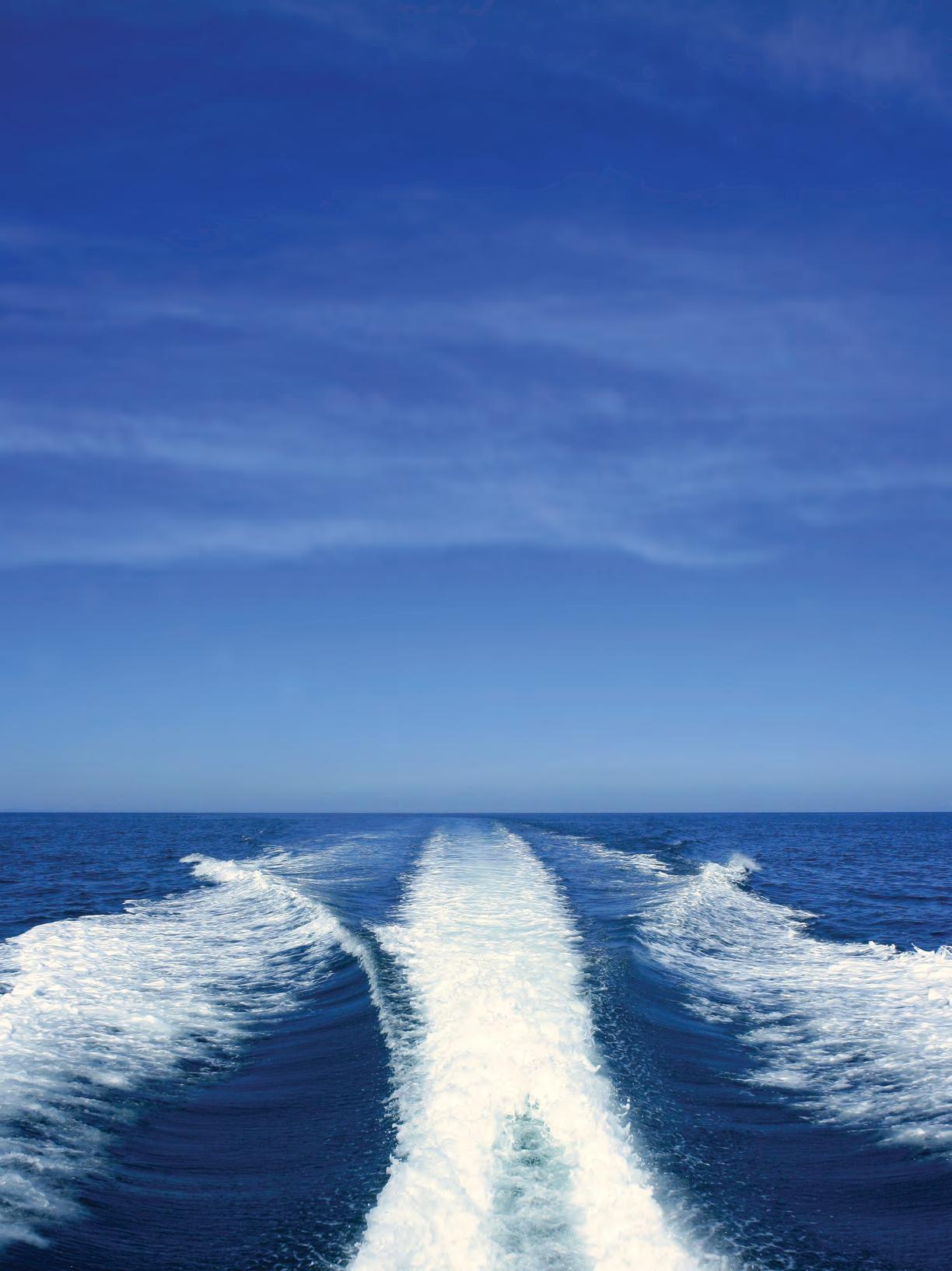












Pompano have already begun to show up here on South Florida’s east coast, and the bite will only get better as we move deeper into spring.
Temperature drives the movements of these tasty little jacks. They prefer 70- to 80-degree water temps, they travel in schools and feed on mollusks and crustaceans in inlets and off sandy beaches. These are some of the reasons pompano are a favorite target of shorebased anglers. Once you find them, you are in for a world of fun. Florida pompano, like permit, are in the jack family. They have a strong resemblance to each other, so it’s important to be able to tell them apart. Size is a dead giveaway when you’re dealing with mature specimens, as pompano rarely grow larger than 6 pounds and permit regularly reach weights of up to 40 pounds. Pompano and juvenile permit, however, have a similar appearance. The most noticeable difference is a permit’s larger, humped forehead. Pompano also tend to be more yellow throughout their body, while permit only have yellow on their bellies near their anal fins.
Anytime from March into the beginning of September, pompano move offshore to broadcast spawn. Since they already travel in schools, this is spontaneous, and they head back inshore when they are done. Prime time to fish for them here is April and May, and you’ll find them along sandy beaches as well as around oyster and seagrass beds. Pompano seem to enjoy water with more current, which has that milky look.

Pompano migrate seasonally to stay in their preferred water temperatures, and they have been found as far north as Massachusetts. They move north or farther offshore to find cooler water in deep summer. They come back south in fall to prepare for the spring mating season. Local movements also happen due to tides and other conditions. They are either in an area or they are not, and they move to find waters where they can feed comfortably. After strong storms, our sandbars tend to change, which will also change where pompano are feeding. Pompano are very spirited fighters on light tackle. Small jigs in yellow or chartreuse are commonly used with great success. Beach anglers use long surf rods and chicken rigs baited with shrimp, clams, crab knuckles and sand fleas. Sand fleas are the preferred bait. Many anglers take it a step further by adding a piece of artificial bait, such as Fishbites, to the natural baits. This is especially effective when other fish peck off natural bait quickly. It ensures something stays on the hook, as most of these artificial baits are very durable. These artificial baits can also be added to jigs for scent.
 Emily Rose Hanzlik holds 56 IGFA world records in various categories. She hails from West Palm Beach, where she has a part time Bowfin Guide Service as well as fishing classes for junior anglers. Find her on social media @emilyhanzlikoutdoors.
Emily Rose Hanzlik holds 56 IGFA world records in various categories. She hails from West Palm Beach, where she has a part time Bowfin Guide Service as well as fishing classes for junior anglers. Find her on social media @emilyhanzlikoutdoors.







Suzuki and Twin Vee PowerCats collaborated to introduce the 240 DC GFX ECO Boat at the Discover Boating Miami International Boat Show
February 15-19 at the Suzuki Oasis at the Venetian Marina & Yacht Club. The 24-foot dual console 240 DC ECO was built to honor the sustainable, environmentally conscious theme of Suzuki’s Clean Oceans Project.
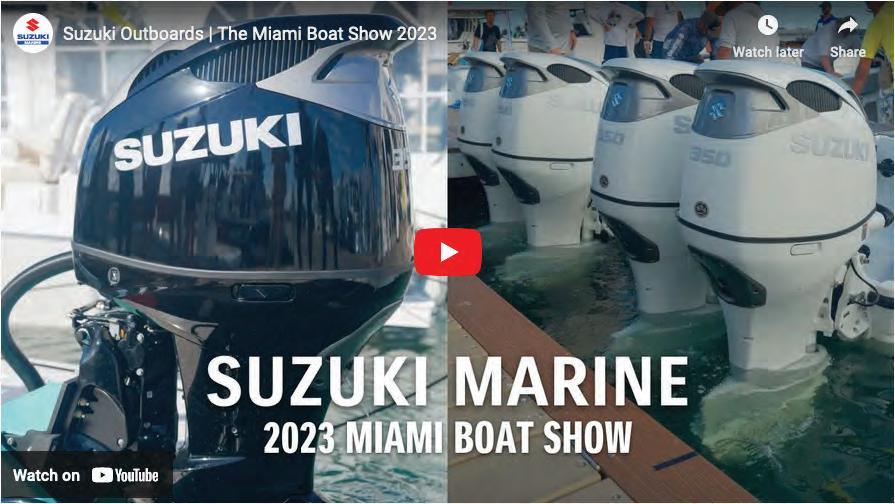
“When we designed this boat, we started with the basics. Like our other boats, the 240 DC ECO was built with two parallel hulls making it more efficient, stable, and smooth on the water compared to traditional monohulls,” explains Joseph Visconti, CEO and President of Twin Vee PowerCats Co.
The Company also utilized sustainable materials when it built the 240 DC ECO. Specifically, the 240 DC ECO has a strong carbon fiber outer layer that is 35% lighter than conventional fiberglass construction and a lightweight yet stiff balsa core. “The natural and renewable balsa wood used on the boat is the first carbon-neutral core material in the world,” remarks Visconti. “The balsa tree grows fast, has low to medium density, and possesses best-inclass weight-specific mechanical properties.”
According to Visconti, Twin Vee sourced its balsa core from 3A Composites, a company that values safeguarding water sources, developing
relationships with local communities, and protecting endangered species and fragile ecosystems.
Additionally, as previously announced, the new 240 DC ECO is equipped with Suzuki’s all-new 140 horsepower Eco outboard motors, which include Suzuki’s Micro-Plastics Filter device. The filter device collects microplastics near the water’s surface while the boat is running, helping reduce micro-plastic pollution.
“Twin Vee was excited to build the 240 DC ECO to encourage eco-friendly manufacturing in the recreational marine industry,” says Visconti. “Our team strongly believes in Suzuki’s efforts to reduce plastic waste and raise awareness of our planet’s waters, coastal environments, and marine ecosystems through its Clean Oceans Project. The 240 DC ECO proves that innovative things can be done to help preserve and protect the world’s waterways
for future generations.”
The micro-plastics collecting system is but one part of the Suzuki’s larger Clean Oceans Project initiative which focuses on reducing plastic waste and its harmful effects on the marine environment. As part of this effort, Suzuki is now reducing the use of plastics in the packaging materials of its outboard motors and parts— changes that should reduce plastic waste from business activities by approximately 2.3 tons annually.
“Protecting the marine environment for future generations has always been important to Suzuki,” said George “Gus” Blakely, Vice President of Suzuki Marine. “Whether by innovating new technology, reducing the use of plastics in our products, packaging and shipping, or putting on gloves and rolling up our sleeves to pick up trash off the beach, (which they did during the Miami Boat Show), Suzuki Marine is committed to keeping our waters and shorelines clean and healthy,” added Blakely.
Twin Vee PowerCats Co. has been building and selling boats for over 27 years. Learn more at twinvee.com.
To learn more about Suzuki’s Clean Oceans Project or the company’s complete line of clean-running 4-stroke outboards from 2.5 to 350 horsepower, visit www.suzukimarine.com or call (714) 996-7040.

Major League baseball player JD Martinez has garnered a lot of accolades on the field, including three Silver Sluggers, a Hank Aaron Award and MLB Player of the Year. In fact, he is a five-time MLB All-Star. Some folks might not know that the former Boston Red Sox turned Los Angeles Dodger is also an avid fisherman. Growing up in Miami, he would often escape to the Florida Keys to go fishing. Through the years, that passion has never faded. Now a resident of Islamorada,
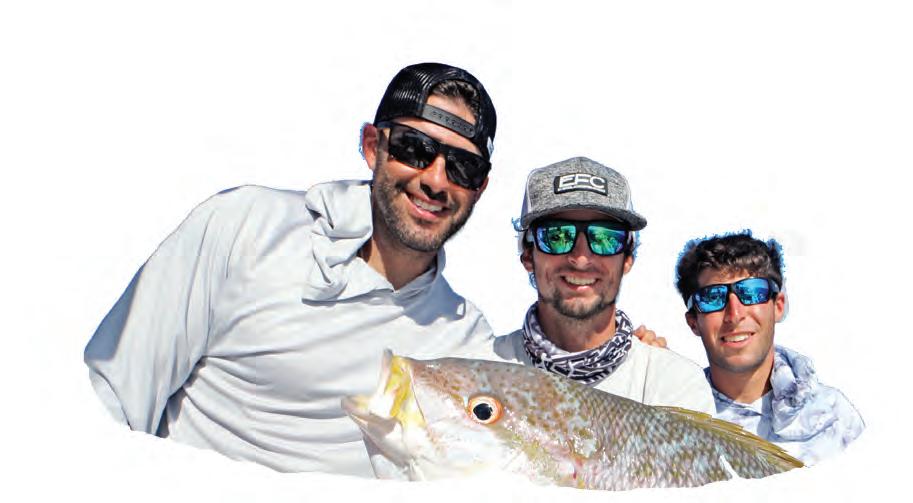


He fished with Capt. Jimmy Willcox, who inspired the passion for fishing. Since his first trip to the Keys, it has always been his dream to become a backcountry guide. In 2021, he fulfilled his dream.
On the boat, these two personalities always make a trip exciting. Capt. Bean’s enthusiasm and sense of humor seem to compliment JD’s vibrant character. The latter is eager to learn, and a tremendous mutual optimism creates an environment where one could fish for hours on end.
The two have tremendous memories of landing fish of a lifetime.




Fishing the Keys seems to be a trend when it comes great Boston Red Sox hitters. Ted Williams, considered by many to be the greatest hitter of all time, played for the Sox from 1939-1960. He was inducted into the Baseball Hall of Fame, and he is also in the Fly Fishing Hall of Fame.
Williams also had a home and fished in Islamorada. He loved to fish for bonefish and tarpon with legendary Capt. Jimmy Albright. Williams loved the challenges of fishing being similar to the challenges of hitting. He turned to science when it came to hitting a baseball, and he carried that forte into fishing. He always wondered and questioned tactics and become as good an angler as any of the guides in Islamorada at the time. Capt. Jimmy Albright often praised Ted Williams’ skills in fishing and always loved to fish with him.
first time tripletailing. Cautioned by Capt. Bean on how difficult it is to get the big ones to eat, JD was on deck, ready to roll. Just like hitting a 95-mph fastball, timing is everything.
After asking for a big bait, JD cast perfectly in line with the stud tripletail, and then the adrenaline was pumping. They were on! Capt. Bean coached JD through it, making sure the drag was right, maneuvering the boat, and being ready with the net. Several runs and exhales later, Bean swooped deep and netted a 20-plus-pound, huge, backcountry tripletail. It was JD’s first and a personal best that will be tough to beat.
Another epic adventure between the two took place during a sunset blackfin tuna mission. Capt. Bean knew this was the optimal time for the bigger blackfins, and the crew used light spinning tackle to make it even more fun. It did not take more than a couple minutes for JD to get tight on a monster blackfin. This blackfin was a drag puller. All you could hear was the reel screaming, and the rod was doubled over the whole fight. JD is a good angler, and he fought the fish for several minutes before Bean stuck it with the gaff. This was JD’s personal best blackfin—a true butterball— and a full-grown one to boot.
On their most recent adventure, Capt. Bean and JD were bottom fishing for mutton snapper when an unexpected bite inhaled a
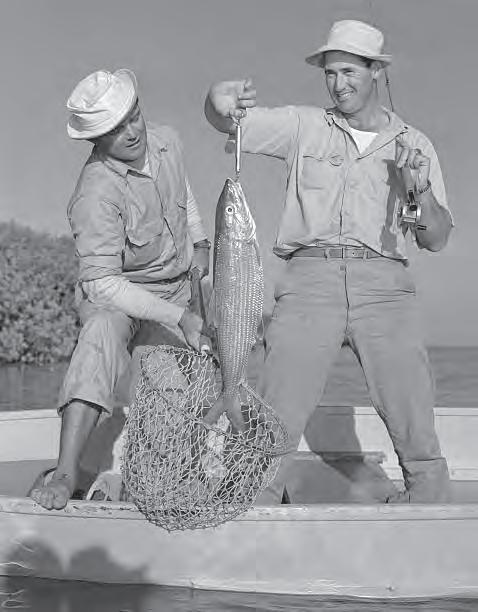
whole ballyhoo. With a stroke of luck, it ended up being an almost record-breaking yellowtail snapper. This behemoth measured 29 inches, making it a fish of a lifetime. Gray’s taxidermy commemorated the yellowtail, to add to JD’s prized mount collection along with the aforementioned tripletail.
JD and Capt. Bean have been on many other adventures, both backcountry and offshore. They set a plan and follow through with it. It usually works out, but regardless of the outcome, the camaraderie always makes it a memorable day.
Follow JD Martinez (@jdmartinez28) and Capt. Bean (@bnmbean) on Instagram. Some of their adventures are featured on YouTube at Bean Sportfishing TV.


Salina spinning reels feature a hybrid carbonite and Japanese felt DFD drag system that outputs more than 33 lbs of fish stopping power. Constructed from advanced LITECAST body material that is 15% lighter than die-cast aluminum, these reels are built for both light inshore and heavy offshore use. With an interchangeable screw-in handle system and six available models from 4000 to 14000, Salina spinning reels are designed to maximize your success on the water.

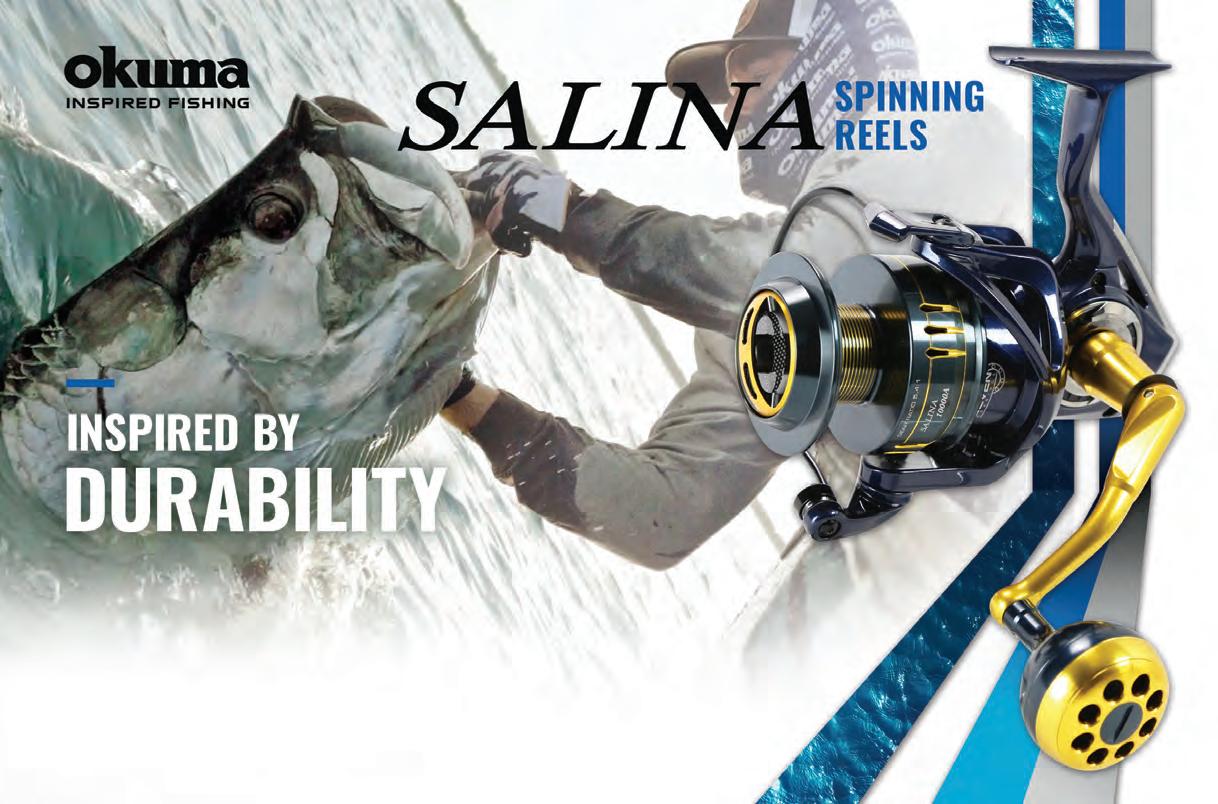
okumafishingusa.com



Located within two hours driving distance to all major attractions in central Florida, international airports and Florida’s beautiful beaches, Putnam County’s outdoor recreational choices are legendary. Between world class fishing, boating, hunting, cycling, hiking, golf, and more, Putnam County has it all. Whether you are seeking real Florida culture and heritage, recreation, or just relaxing in a small historic town, the residents and businesses of Putnam County invite you to Experience Real Florida.

visitputnamcountyfl.com







The St. Johns River flows north for 310 miles from Indian County to the Atlantic Ocean, and is divided into three basins— upper, middle, and lower. Putnam County is in the lower basin and centrally located to the river’s best fishing. Not only has it earned the title of “Bass Capital of the World,” but offers a list of other freshwater and saltwater or brackish-water fishing. Freshwater species include the largemouth bass, black crappie (speckled perch), bluegill, shellcracker, warmouth and catfish. Saltwater species include red fish, flounder, sea trout and tarpon. Shrimp migrate up the brackish water during the summer months. Striped bass can be caught mostly during the fall and winter months.
From downtown Palatka south to Lake George, some 42 nautical miles, the St. Johns tree-lined shores and extensive vegetation provide an excellent habitat for fish. Lake George is a 46,000-acre natural impoundment of the St. Johns. It is the second largest lake in the state, with three spring-fed tributaries, and holds acres of eelgrass beds, as well as old pilings, docks, and jetties. In between the big lake and Palatka, the Ocklawaha River flows into the St. Johns north of Little Lake George via Rodman Reservoir/ George Kirkpatrick Dam. Further north Dunns Creek connects a 5-mile stretch southeast to
Lake Crescent, a 15,960-acre lake bordering Putnam and Flagler County.
North of Palatka Memorial Bridge to Trout Creek there are plenty of drops, sandbars, docks, pilings, and natural structures to satisfy any anglers idea of a good fishing trip. The river and its connecting waters have numerous marinas, hotels, fish camps, ramps and launches for local and visiting anglers.
Putnam County and Palatka are recognized across the country as one of the favorite sites for the Bassmaster Anglers Sportsman Society (B.A.S.S.) professional fishing circuit. B.A.S.S. often returns to the Palatka riverfront to showcase their Elite event, where the world’s top 100 professional anglers compete. This exciting event which attracts hundreds of spectators, gives the community national recognition and a terrific economic boost.
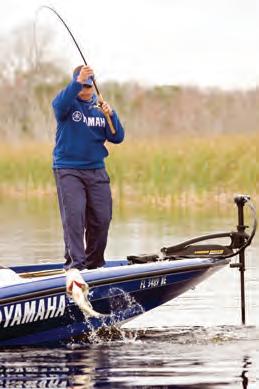

Palatka’s riverfront is the site for the largest one-day bass tournament east of the Mississippi River. For over 30 years, the Wolfson Children’s Hospital Bass Tournament (WCH) launches nearly 500 boats annually, with anglers from all over the southeast. Rodman Reservoir, known for its big bass, is host to the Annual Save Rodman Bass Tournament.
Putnam fishing has it all. Whether it be a
family day in a boat, a dock, along the bank, or in the competitive atmosphere of tournament fishing.

Planning the perfect stay in Putnam County just got much easier! We’re excited to introduce the Visit Putnam widget, an interactive way to map out everything you will want to visit in Putnam County. You can explore our tourist destinations, select a specialized tour, see upcoming events, restaurants, lodging, things to do, services & much more!

OR DOWNLOAD THE VISIT PUTNAM APP TODAY!


Trim tabs help level a boat in any situation, resulting in better control of the vessel for the skipper and a more comfortable ride for everyone onboard. In addition, a quality trim tab system will enhance overall boat performance and increase fuel efficiency by adjusting the vessel to its optimum running angle in various sea and weather conditions.
Trim tabs help get boats out of the hole and onto plane faster. They can also be adjusted to stop a boat from “porpoising” — the cyclic and rhythmic oscillation of the powerboat in relation to pitch and heave. Trim tabs also help keep a vessel on plane at various speeds, for a more comfortable and efficient ride. Lastly, trim tabs can help reduce listing, the roll or tilt of the vessel due to propeller torque or uneven weight distribution.
Any planing hull powerboat will benefit from the addition of trim tabs. A quality trim tab system can transform your boating experience and provide easy, confident control in a variety of conditions.
First, a vessel that gets on plane more quickly spends less time running at inefficient ride angles. Trim tabs can also allow a vessel to remain on plane at lower engine RPM. The


The intuitive dial controller makes both the Dometic Standard and Dometic Adaptive trim tab systems unique. The dial allows for easy and precise adjustment, removing any guesswork from leveling your boat. The controller allows you to easily adjust pitch and roll to get your boat on plane quickly and efficiently. The controller works by simply turning the dial in the direction you want to level the boat. The actuators respond quickly and precisely to adjust the ride. There are also single press Bow Up and Bow Down buttons for manual adjustment, and a Favorite Button
ability to “fine-tune” a boat’s running attitude and balance in the face of wind, waves and other conditions helps reduce hull drag and fuel consumption in various conditions.
to return to boat’s “sweet spot” ride position with the touch of a finger. The system’s Home Button quickly moves the tabs to home position. WWW.DOMETIC.COM

Dometic has redefined the ease of use and practicality of a basic trim tab system. Featuring an intuitive dial controller, you can easily adjust the pitch and roll to get your boat on plane quickly and efficiently. A programmable favorites button makes for effortless operation. While its innovative, rugged design and autoretract feature, ensure reliability and safety on the water, whatever the conditions.


Today we are going to cruise past the shallow South Texas flats, through the pass, and find some nearshore rocks loaded with huge legal Texas red snapper! What a difference a few miles and 68 feet of water can make.

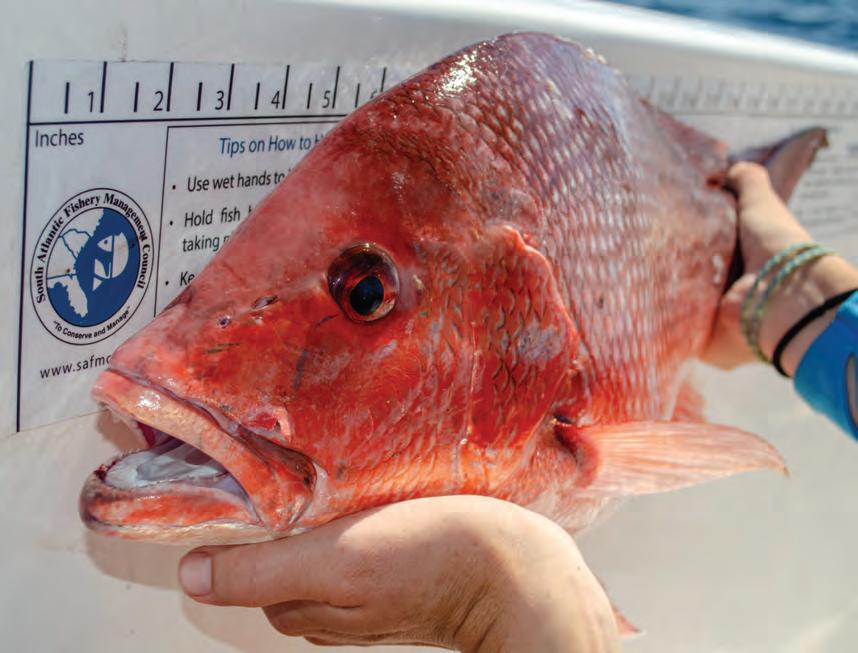
I typically make a handful of trips to the short rigs or rocks off the Texas coast each summer for a change of scenery. On the calm summer days, the mosquito fleet (smaller bay boats) breaks the jetties and heads out for kings, cobia and red snapper. These shallow-water snapper are typically in the 16- to 20-foot range. They are tasty none the less, but nothing like what you find close to shore in winter, as I recently observed during my first winter offshore trip.
Recently, we were in between cold fronts and had our first sunny day in more than a week. Several days of windy, cloudy, cold, rainy days had me longing for some sunny rays. When my brother called and asked if I wanted to join him and his neighbor for some Texas red snapper, I didn’t hesitate to say yes! The photos he sent of the previous trip’s catch were the icing on the cake. The forecast called for 2- to 3-foot seas—which turned out to be less—70-degree sunny temps, and wind at 6 knots from the east. This was a one-day window.
When we pulled up to a small set of rocks, there were two other boats there and four rods were doubled over! One of the boats was doing a bag check, and I watched him tossing and counting 15- to 20-pound snapper into the cooler. His count ended at 14, two shy of his limit… and they had two on the line.
Keep in mind, at this time my personnel best snapper was about 8 pounds, and everything I was seeing was more than twice that size. The anticipation was high as I waited for the trolling motor to lock in.
Once the trolling motor settled into place, we pinned chunks of squid onto bottom rigs weighted with 8 to 12 ounces of lead and
the fun began! It became a bit chaotic with doubles on while trying to coax a 20-pound snapper into an oversized net while still trying to catch one yourself.
It is hard to beat the drag zinging of a king mackerel or the Mack Truck power of a cobia during the calm days of late summer, but I might have to switch my snapper season from summer to winter! When the smallest winter ones are twice the size of your largest summer catch, it’s an easy switch.
Bringing 'Everything Fishing' And Some!



Our sister, The East Tennessee Fishing Show & Expo hosts the largest gathered selection of fishing boats, tackle, kayaks, custom lures, rods, reels, apparel, marine electronics, fishing accessories, and more! – We have taken a few pages from her playbook, and we have brought them down to Gadsden, Alabama where we will be bringing the very first Alabama Fishing Show & Expo!
We ONLY host vendors with fishing, marine, and lake/salt-life related products! Many of our vendors offer multi-species gear for fresh or salt water! We welcome any and all vendors who might have that ‘next BIG thing’!

We try to make sure there is something for every kind of fisherman that attends our event!


We are also sure to include a huge selection of boats and kayaks too, as we try to make it as easy as possible to shop for the newest salt/fresh water fishing boats, gear, and accessories from many reputable and top-notch marine dealers in the greater local and regional Alabama area.
Pro Anglers & Special Guests
One Venue: Everything Fishing!
Bringing Hundreds Of Vendors
MILITARY & FIRST RESPONDERS DAY
Friday March 10th 10:00am - 7:30pm
JUNIOR ANGLERS DAY
Saturday March 11th 10:00am -7:30pm
FINAL DAY OF EVENT
Sunday March 12th 10:00am - 5:00pm
The newest in fiberglass and aluminum fishing boats, tackle, kayaks, custom lures, rods, reels, apparel, marine electronics, fishing accessories, and more! That barely gets us started.

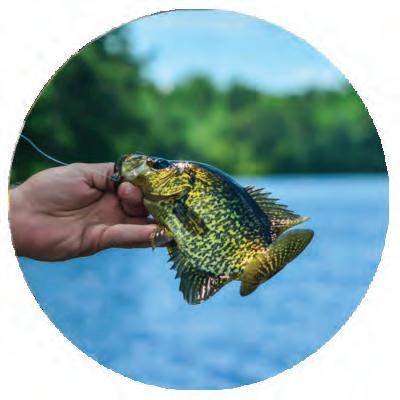

COME SEE US MARCH 10TH-12TH, 2023 AT THE VENUE AT COOSA LANDING!

Some waters remain stained most of the year; even these waters can and will get dirtier. Generally this happen during periods of high rainfall, when creeks and rivers carry sediment into lakes and reservoirs, making clear water stained, and turning stained water into mud. Many anglers will make the mistake of not fishing the area or searching all day for cleaner water as they are intimidated by the conditions. I say fish it, especially in the spring!
It’s typical for bass to move up into shallow water in muddy conditions. Bass feel safe in dirty water, knowing it’s easier to hide from predators. Additionally, muddy water warms faster in sunlight than clear water, which draws in bait and provides bass with increased feeding opportunities.

In muddy waters, bass can be found in areas devoid of cover too, especially in areas that have a defined “mud line.” In heavily stained water, I’ve found large concentrations of big bass actively hunting across featureless, shallow flats that are normally unproductive due to the lack of cover. Baitfish are key to finding active muddy-water bass. If you find large schools of

shad or other kinds of baitfish in an area, more times than not you will find actively feeding bass.

Bass in muddy or stained water don’t rely on sight as much as they rely on other senses. Hearing and the ability to detect vibrations through their lateral line are the two most critical senses bass rely on to find prey when visibility is low. Choosing lures that produce lots of vibration and sound is a major key to successfully catching bass.
Crankbaits, spinnerbaits and blade baits are often the best choices, as these lures all produce lots of sound and vibration that allow bass to easily locate the lure. Rattle baits like the Azuma Shaker-Z from Profound Outdoors are always a good muddy water option. The best spinnerbaits are usually those with two or three blades, which produce greater vibration and sound. Additionally, Colorado blades produce more vibration than willow leaf blades, displacing more water as they turn and
a 3/8-ounce red buzzbait and slow roll it on the surface around old weed lines or over stump fields… hold on tight!

Other lures which work well on muddywater bass are jigs and plastics, but with modifications and additions. My jig of choice in muddy water is a ½-ounce Mussel Crawler in black/blue with a large trailer and rattle. Soft plastics such as Tomahawk worms or D-Bombs from Missile Baits can excel around bedding fish in muddy water. Adding rattles to these lures often makes them easier for bass to find. Also, a more subtle vertical presentation with soft plastics and jigs is usually a better option for muddy-water bass.
When a slower presentation is required, it’s beneficial to use scent. Scents can even be used on spinnerbaits, and can help in muddy water when fishing the lure very slowly. I consider scents a critical addition to jigs and plastics. Capt. Jake Davis is a USCG licensed professional fishing guide on Lake





Coming off an exciting and informative chapter one, Yamaha WaveRunner premiers the second chapter of their Run the Water video series titled, “The World’s Aquarium.”



This time around, viewers have the pleasure of being introduced to Gádor Muntaner and Rafael Fernandez Caballero, a like-minded power couple with a passion for conserving the waters of Baha, California and the abundance of sea life that call it home. Crowned “The Aquarium of the World” by Jacques Cousteau, it will not take long for audiences to discover why the survival of the ocean is the survival of the planet.

Hailing from Spain, Gádor first put a mask, fins, and snorkel on to explore Mallorca Island at the ambitious age of three years old. Eager to uncover more of what lies beneath the surface, at age sixteen, Gádor acquired her open water diver certification – and the rest is history. Quoted saying he was born with a camera and oxygen bottle under his arm, Caballero utilizes his underwater photography as a tool to assist Gádor in disseminating the many problems facing our oceans.
Continuing the pattern of eye-popping visuals and compelling story telling, The World’s Aquarium seamlessly showcases why the FX Cruiser HO is the perfect vessel
for discovering a new world. Understanding the only alternative to co-destruction is coexistence, these two explorers choose the latter.
To ensure you never miss the boat, Run the Water chapters one and two are now available on the Yamaha Boats and Yamaha WaveRunners website, yamahawaverunners.com/run-the-water, along with Yamaha WaterCraft social media channels.
 By Capt. Lukas Brickweg
By Capt. Lukas Brickweg
The wondrous world of summer fishing in Alaska draws anglers from around the world who flock to these rich waters annually. Ketchikan, Alaska, nestled in the heart of the sprawling temperate rainforest known as Tongass National Forest boasts the title of “Salmon Capital of the World,” and for good reason. But salmon are not all visitors can expect to catch in this world-renowned fishery. As an experienced captain who runs daily charters out of Ketchikan during the season, I still find myself surprised by the productivity of these waters. Along with five species of salmon, we also land big halibut, giant lingcod, pacific cod and rockfish in our daily catch limits. The fishing is superb, and so is the wildlife watching. Hit the water
with us, and I will gladly hand over the binoculars when marauding pods of orcas show up on the surface or when magnificent humpback whales breach. We share these waters with eagles, sea lions and so much more. It makes a perfect fishing getaway for the entire family.
The awe-inspiring beauty that surrounds Ketchikan is something that must be witnessed to understand. From the rugged terrain of old growth forest in Tongass down to the vibrantly rich waters, each day surprises visitors with landscapes and wildlife that make Ketchikan a bucket-list destination.

Who doesn’t dream of giant halibut or monstrous king salmon on these scenic waters? Peak season runs from mid-June through September, with the absolute best fishing during the months of July and August. This occurs when we have an overlapping run of king salmon, silver salmon and pink salmon. All the while, big halibut will have moved in from deep water to feed on the abundance of food present. For these reasons,


one can expect to catch all species with potential record catches of halibut, salmon, lingcod and rockfish hitting the docks by day’s end.

Here’s what you might expect on a good full-day charter. We start out bottom fishing for halibut in 150 to 400 feet of water until we get a

limit. Using deep-water jigging rods, you’ll be tasked with reeling in hard-fighting halibut from the depths.
Then we switch gears to trolling with electric downriggers, running four rods for all five species of wild Pacific salmon. Whether or not we hit our limit of salmon, we usually end the day jigging with light tackle for giant lingcod and pelagic rockfish to top off the day’s catch. Why settle for one species when you can fish for them all?
A processing service will fillet, vacuum seal and box up your catch to be shipped home overnight or taken on your flight as a checked bag. Ketchikan is easily accessible with convenient commercial flights, just two-hours out of Seattle, and lodging accommodations are available for groups of all sizes.
Book your dream trip to Alaska with Capt. Lukas Brickweg, of Ketchikan’s Finest Fishing Charters, at www.ketchikanfishingtrips.com, call (907) 617-4717 or email ketchikanfishingtrips@gmail.com.

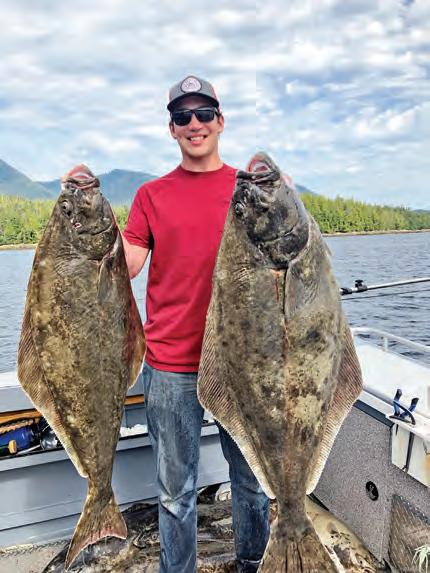


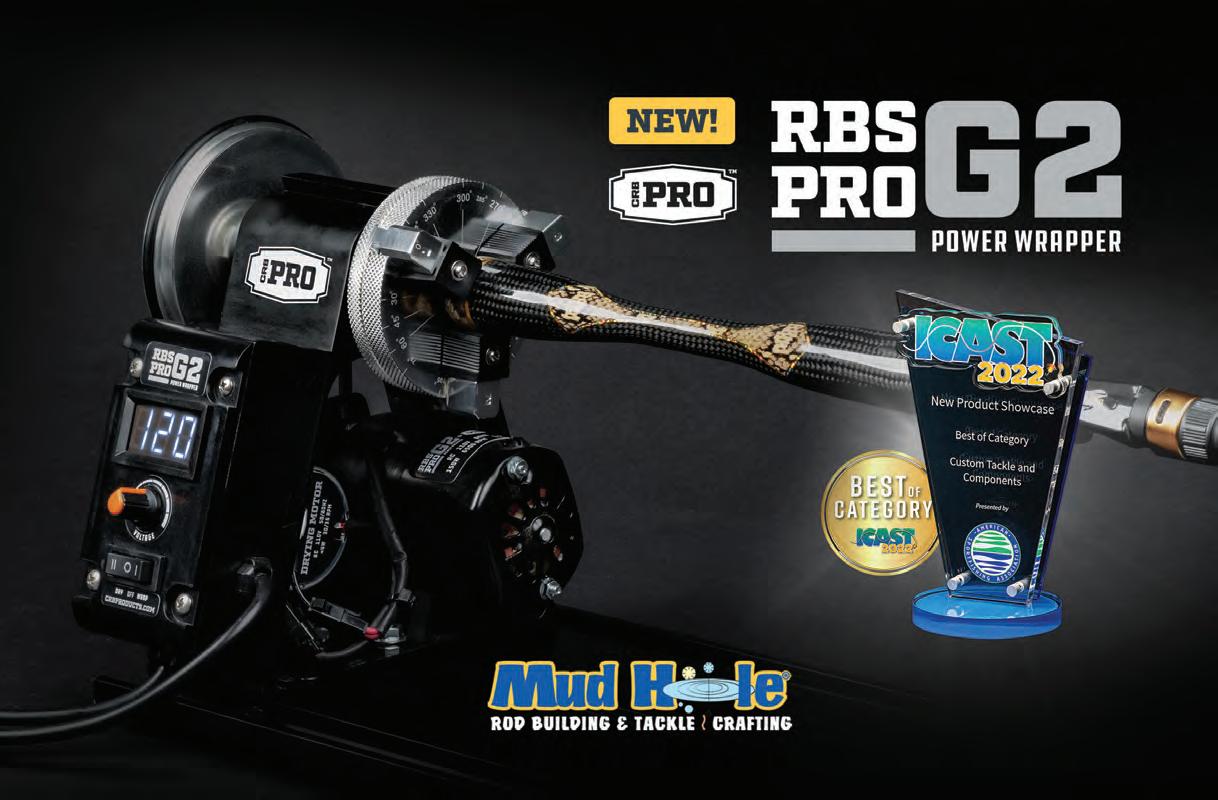




Shown with optional solar charging system
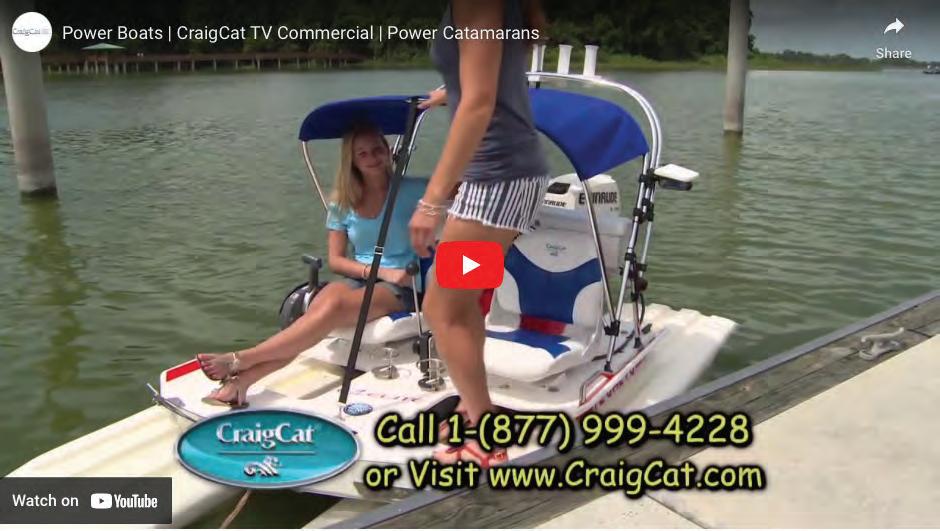
$7,469 + tax and registration

Let’s talk a bait that works absolutely everywhere. The bladed jig, also called a chatterbait, is one of the most versatile baits you can tie on the end of your line. It’s one of my all-time favorites. From Florida to New York, in any season, this bait catches them.
There are hundreds of situations that make me want to sling a chatterbait. I always keep one tied on because it’s so versatile. Whether it’s grass, rocks, docks, wood or open water, there isn’t a situation where this bait doesn’t work.
Use a chatterbait as a search bait and cover some water. If there is a hungry bass around and you match your color to the forage they are feeding on, you will get them to bite. Unless the water you are fishing is extremely muddy, matching color to the forage species is important. In cold water, where bass are feeding on red and orange crawfish, tie on a bright red or orange bladed jig. If you are in the south and bass are feeding on bluegill or shiners, stick to natural colors like a green pumpkin or some kind of gold and silver. The only time I throw a bright white or chartreuse chatterbait is in extremely stained water, where I need the bait to stand out. Always match the hatch!
I live in Florida, and our spawning season is earlier than most. By the time you read this, most of our fish will be finished spawning. Farther north, they’ll just be getting started. A chatterbait is deadly when bass are staged up before, during and after the spawn. The chattering blade drives these fish crazy. It’s a fish call. Throw it around in a staging area and you will have a very good day on the water.
There isn’t a wrong way to use it. With the many colors, weights and size options, there is a match for the style of fishing you want to do. From northern smallmouths to giant South Florida largemouths, every bass will eat a bladed jig.
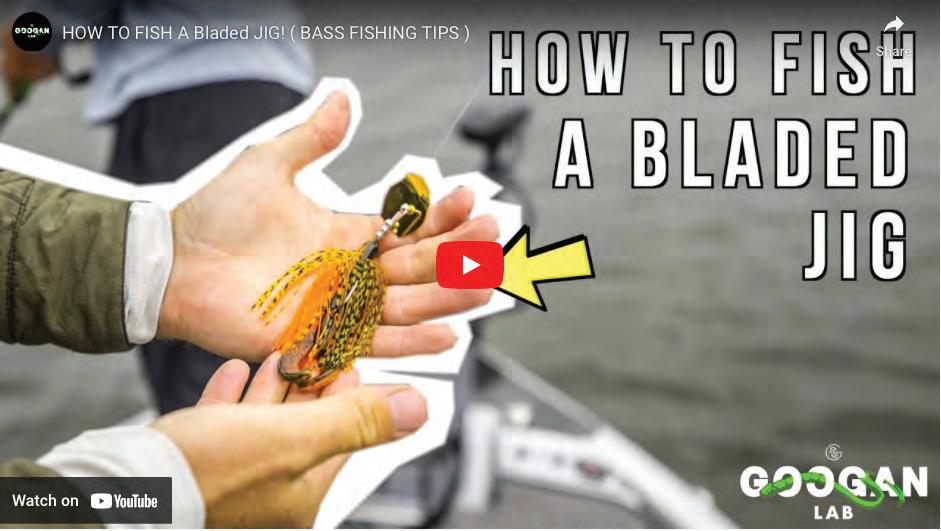

Like any bait, a chatterbait will perform best when matched with the right gear. I like a medium-heavy, moderate-action rod. You don’t want to set the hook as much as you want to reel into the fish when
they eat the bait. Treat it like a bait with treble hooks. The 13 Fishing Omen Black 7’4mhm is absolutely perfect for this application. I pair a 7:5:1 gear ratio Concept A 13 Fishing reel and 15- to 20-pound Seaguar AbrazX.
Hope this fishing tip finds you well and puts more fish in your boat. Don’t hesitate to contact me on social media with any questions.
Tyler Woolcott is a professional tournament angler and guide. Check out his website at www.tylerwoolcottfishing.com.

Micron Navigator is a unique and revolutionary antifouling that combines both water-based and copper-free technologies enabling optimum fouling control for all waters and boats. This technology delivers multi-seasonal protection via a lower concentration of active ingredients, achieving a more environmentally responsible antifouling without compromising premium protection as you explore your world.

Interlux.com



Watauga River
Home of world class fishing on the beautiful Watauga Lake, rugged Doe River and designated trophy trout stream, Watauga River
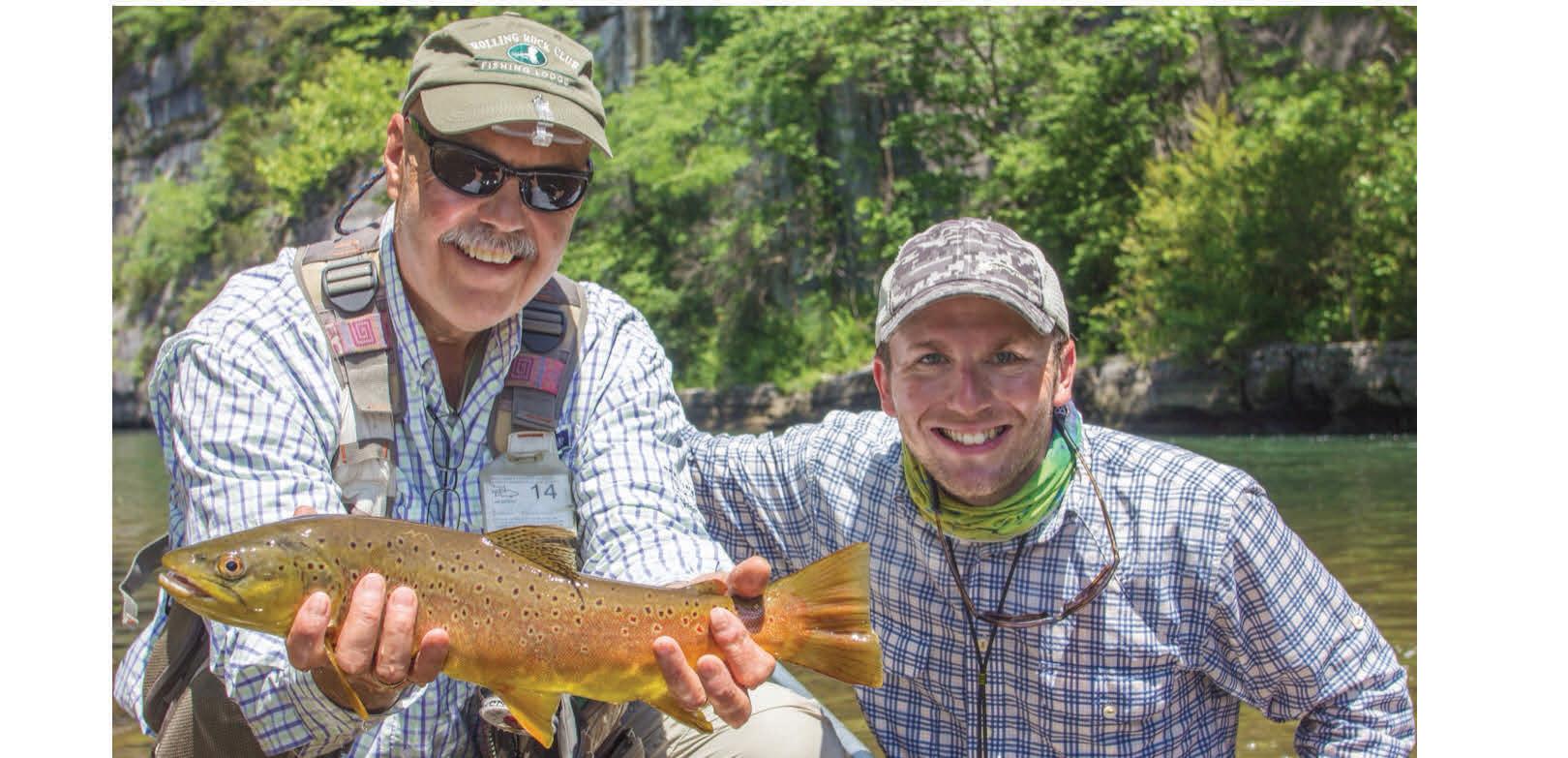
Watauga Lake
Doe River
PLAN YOUR TRIP AT TOURCARTERCOUNTY.COM



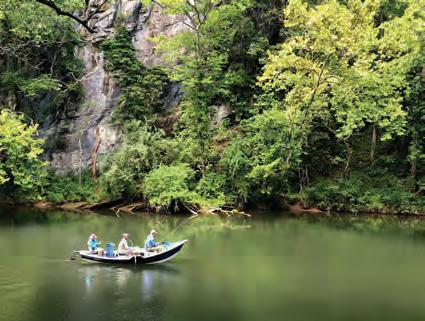
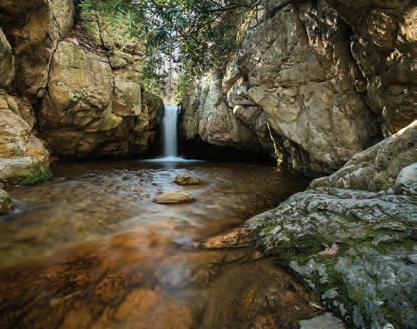

















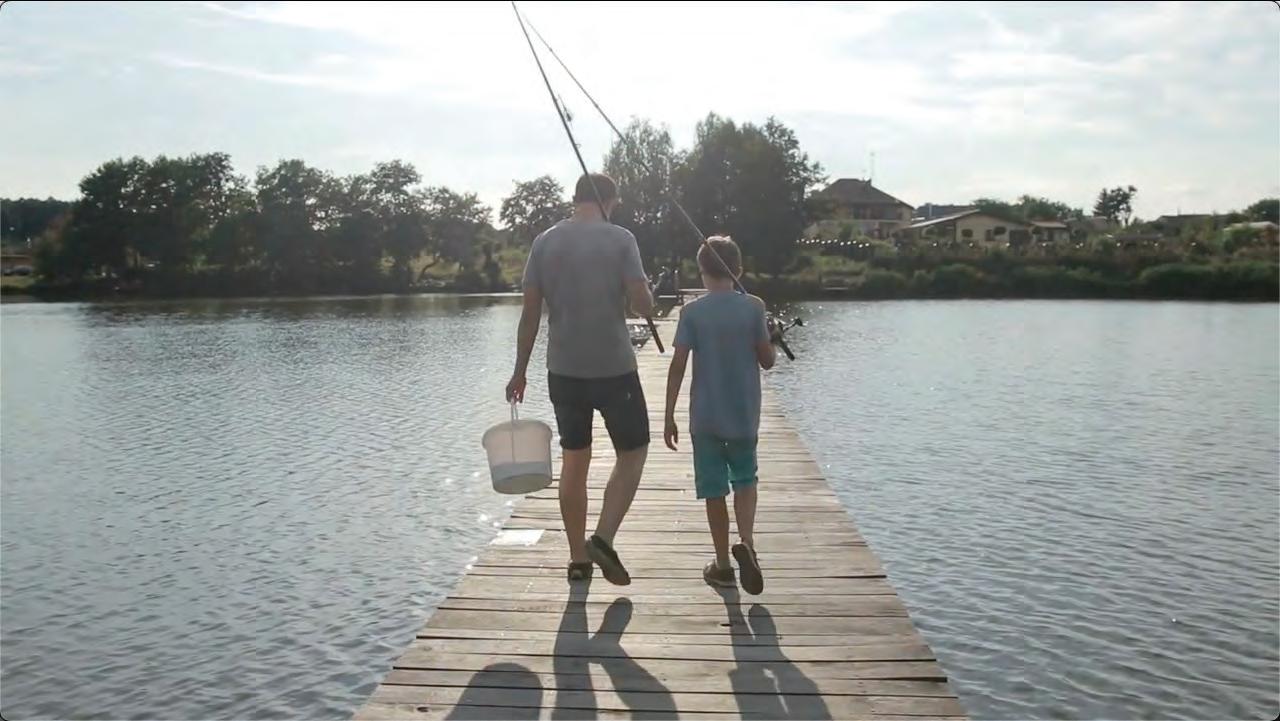

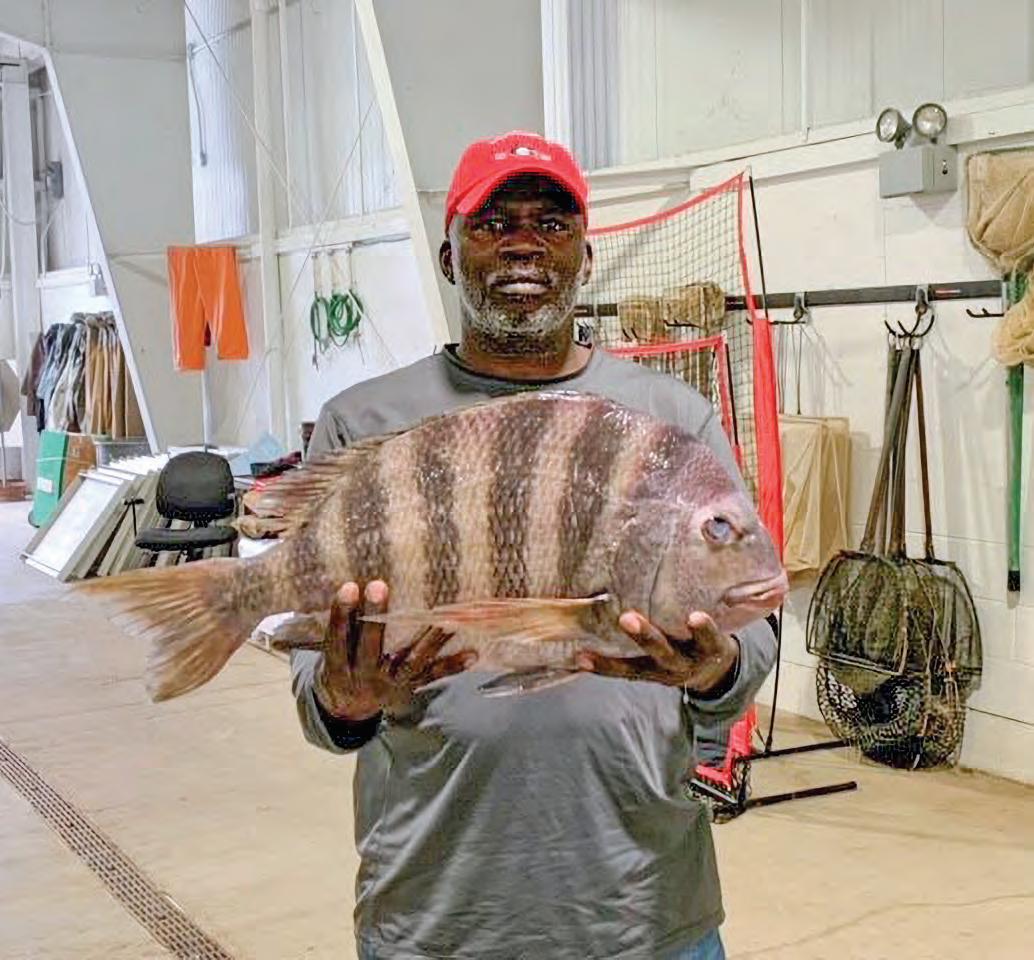
This big Georgia sheepshead tied a twodecade-old state record for the species after weighing in at 14 pounds, 14.37 ounces.
The angler, Ben Golden III, of Midway, Ga., caught his fish near the Sunbury community outside of Midway on Feb. 3. The catch qualifies as a tie with the existing record of 14-pounds, 14-ounces set by Ralph White, of Rincon, Ga., in 2002.
“To be honest, I’ve been telling folks it’s been my goal to catch a state record for 10 or 12 years,” said Golden, who grew up in Midway and has been fishing the Georgia coast most of his life. “I’m excited to say that I did it.”
Sheepshead are common around 7 pounds but can easily be found up to 10 pounds. They reach maturity around 3 to 4 years of age and primarily live inshore, often near rocky areas, docks, bridges or artificial reefs, or other
areas with barnacles.
Between 2017 and 2021, NOAA Fisheries estimates that Georgia recreational anglers caught an average of 490,197 sheepshead each
year, with an average of 262,457 being harvested. For more information on the Georgia Saltwater Game Fish Records program, visit www.CoastalGaDNR.org/SaltwaterRecords.
and different with my friends for my “bachelorette” getaway. I always thought noodling would be a cool experience.

If you’re not familiar with noodling, it’s a technique anglers use to catch catfish with their hands. In the lead-up to the spawn, catfish find holes in the banks where they will eventually lay and guard their eggs. It’s up to the angler to locate either a natural hole or a strategically placed box that a catfish has decided to call home. The angler then sticks their hand into the hole, triggering the catfish to chomp down on their hand and forearm. Then, it’s a wrestling match to the surface.


The flathead catfish we pursued don’t have teeth, but they do grow large, with some fish reaching well
celebrities.
Because it takes place during the spawn, this style of fishing has become almost 100-percent catchand-release for many noodlers. After a few photos, fish are released safely to return to their holes and continue spawning duties.
When my two best friends and I left the familiar clear Florida waters for the beautiful state of Alabama, we had the goal to get one of these monster cats to bite... our arms. I’m not going to lie; I was a bit nervous getting on the boat. It was beautiful and peaceful on the river, but the water is murky like chocolate milk and the banks are muddy. Shoes are highly recommended.
When I entered the water at our first spot, it kind of hit me: “What
have I gotten myself into?”
But there was no turning back. Our guide located the wooden box he had planted earlier in the season and instructed me to hold my breath and lie on the bottom while slowly sliding my hand into the hole.
At first there was nothing. Then… WHAM! It was like a toothless gator grabbed me. I had been instructed to grab that sucker by its lower jaw with both hands and not to let go. So that’s what I did. After a brief struggle, I had a dandy on the surface staring right at me!
Through the day, we tried many holes, some empty and some with fish. Each time we stopped, the anticipation and excitement were the same as at the first hole. It was a great experience, and I plan to go again soon. If you’ve ever thought of going noodling, I highly recommend it, 10/10.
The noodling season runs from mid-spring through the summer, depending on the location. Get online and find a local guide for the area you’re interested in. Feel free to contact me with questions on Instagram @get_outside_with_deidra or my husband, Capt. Jamie Thrappas @yellow_dawg_fishing.


 Deidra and her husband Capt. Jamie Thrappas are co-publishers of the Volusia County, Fla. edition of Coastal Angler Magazine.
Deidra and her husband Capt. Jamie Thrappas are co-publishers of the Volusia County, Fla. edition of Coastal Angler Magazine.
Let’s grow with Florida together for another 60 years.





























his month, for the first time in more than 30 years, a few Florida anglers will have the opportunity to harvest a goliath grouper. The limited and highly regulated season runs from March 1 through May 31, and you’re out of luck if you don’t already have a state-issued Goliath Grouper

Just 200 non-transferable permits were issued by lottery after the application period back in October 2022. This spring, permit holders will hit the water in search of a very expensive fish sandwich. On top of a $10 fee to enter the lottery, anglers selected for a permit paid $150 for Florida residents and $500 for non-residents for the chance to harvest a

“No way. Not interested at all,” said one angler from the Florida Keys when asked if they hoped to get a permit. “I guess there’s
some novelty in eating a fish that no one is supposed to have tasted for 30 years, and it might make sense if they let you keep a big one, but it’s hardly worth my time to chase a 10-pound grouper.”
The slot limit for the one fish allowed per permit holder is 24 to 36 inches. Fish above or below that slot must be released immediately. Anglers with goliath tags will be intentionally fishing for juveniles rather than the enormous 8-foot-long, 800-pound monsters that lurk around shallow, nearshore structure.
This highly regulated and extremely limited harvest seems to be the Florida Fish and Wildlife Conservation Commission’s (FWC) way of testing the waters. Harvest of goliath grouper was completely banned in 1990 after the population collapsed due to overfishing and the loss of mangrove habitat
required by juveniles of the species. Since then, the population has rebounded and abundance continues to increase. Removal of just 200 fish from the population, and no more than 50 fish from Everglades National Park, will not hinder rebuilding, according to an FWC presentation on the fishery.

Additionally, goliath grouper may not be harvested from federal waters or from the waters of Martin County, including the St. Lucie River and its tributaries, south through the Atlantic coast of Monroe County and Dry Tortugas National Park.
Goliath grouper harvest will also allow FWC to collect important data for a species about which there is plenty to learn. Upon catching their one goliath, tag holders must immediately apply their tag to the lower jawbone of the fish and report their catch online within 24 hours. Even if they don’t catch a fish, tag holders must report that after the season ends. Some permitted anglers will be required to provide a biological sample of their fish for genetic testing.
For more information, go to myfwc.com.














The in atable shing kayak is super rugged and ready to take on hooks, ns, and rocks. Tough, fast, portable, and built especially for anglers. The patented NeedleKnife™ keel cuts through the water so you can paddle or motor your way to your favorite spot quickly and easily. The Angler 385fta is 12’6” x 36” fully in ated and holds up to 2 people or 635 lbs. of people and gear. Packs down to 36” x 15” x 20” to t in a car trunk, SUV, RV, any small place. Various seating and trolling motor options are available.










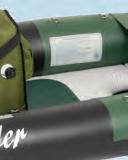


The new 3 lb. Bixpy® J-2 Electric Motor attaches to the skeg base and includes a wristband remote for easy speed control. Small 7 lb. lithium-ion battery ts in the back of the kayak.


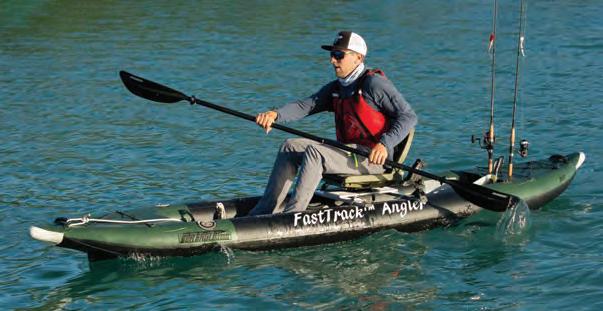

he Sea Eagle® FastTrack™ 385fta Angler is a high-performance inflatable kayak designed for anglers who want a versatile, portable, and easy-to-use watercraft that can handle a variety of conditions. And now it’s available with a compact, lightweight, 33 lb. thrust electric motor. The FastTrack™ 385fta Angler is made of a durable, puncture-resistant material that can withstand the rigors of fishing and is equipped with a range of features that make it an excellent choice for serious anglers.
One of the great things about the Sea Eagle® FastTrack™ 385fta Angler is its stability. The kayak’s design includes a wide, stable hull that can handle choppy waters and high winds without tipping over. This makes it an excellent choice for fishing in a variety of waters, from calm lakes to ocean bays.

Another great feature of the FastTrack™ 385fta Angler is its portability. The kayak is lightweight, just 45 lbs. and easy to transport, making it an excellent choice for anglers who want to explore new fishing spots. The kayak can be easily deflated and stored the included carrying bag, so you can take it with you on road trips, camping trips, or flights.
The FastTrack™ 385fta Angler is also equipped with a range of fishing-specific features that make it an excellent choice for serious anglers. The kayak has multiple fishing rod holders so you can keep your rods within reach at all times. It also has multiple, slots for hooks, lures, and gear at the bow and stern. There’s also two 36” fish rulers that make it easy to measure your catch.
The Bixpy® J2 Motor is a powerful and versatile motor that can be attached to the Sea Eagle® FastTrack™ 385fta Angler to extend their fishing range. It’s a lightweight and compact electric motor that weighs just 3 lbs., the included lithium-ion battery weighs just 7 lbs. That’s just 10 lbs to tote around. The motor easily attaches to the kayak’s skeg base
in seconds. With 33 lbs. of thrust, the Bixpy® J2 is powerful enough to propel the kayak at speeds of up to 5 mph, which can be a huge advantage when you’re trying to cover a lot of water quickly or need a bit of help paddling through rough current or wind.
A great feature of the Bixpy® J2 Motor is its ease of use. The motor is controlled using a wireless wristband remote so you can easily control the motor’s speed. With 12 forward and 3 reverse speeds, you have plenty of options for powering your FastTrack™ Angler.
Overall, the Sea Eagle® FastTrack™ 385fta Angler and the Bixpy® J2 Motor are an excellent combination for serious anglers who want a high-performance watercraft that can be easily transported and adapted to a range of conditions. With its stability, portability, and fishing-specific features, the FastTrack™ 385fta Angler is an excellent choice for anglers who want to explore new fishing spots or troll the tried & true favorites. And with the added power and versatility of the Bixpy® J2 Motor, you can cover more water and reach the fish faster and with less effort.
Situated riverfront and surrounded by the natural springs of King’s Bay, Plantation on Crystal River is an ideal setting for travelers of all ages and interests to enjoy endless outdoor activities. From boating and fishing to scalloping and wildlife encounters, visitors from around the globe travel to Florida’s Nature Coast to enjoy the organic assets of this dynamic destination. And before or after these unique activities, guests can enjoy the full-service restaurant, lobby bar and tiki bar conveniently located on property. For international travelers, transportation is convenient with nearby international airports, including Tampa International Airport only 70 miles away, and Orlando International airport just 90 miles away. To follow is just a sampling of the abundance of available outdoor pursuits.

Monday: The Key West Storm - $8 made with Papa Pilar sherry Finish rum, ginger beer & lime juice.
Tuesday: Tequila Tuesday - $8 for our featured tequila of the month (no substitutions). March's Tequila: Salt Chocolate.
Wednesday: Wine Wednesday - $10 off any bottle of wine with dinner purchase.
Thursday: Thirsty Thursday – Take $2 off any of Plantation’s Signature Cocktails or Glasses of Wine.

• Get 15% off now through 4/15/2023
• Sunday – Thursday 11/28/22 through 4/15/2023.
(excluding Holidays and special events)





Big western trout are fun. Salmon fishing in Alaska can be an epic adventure. But if you want to do battle with the biggest, most ferocious salmonid in the world, you’ll need to book passage to Mongolia, where the rivers are home to the fish of a flyrodder’s dreams… or nightmares.
The Siberian taimen, called “Mongolian terror trout” by National Geographic, is like an enormous trout with a very bad attitude. The IGFA world record is a 115-pound, 8-ounce fish, and it is said they can grow much larger. This, however, is not the norm. Most taimen caught by anglers with fly rods on Mongolian rivers run 20 to 30 inches and weigh between 6 and 15 pounds.

Dan Bailey, with Fish Mongolia and Mongolia River Outfitters, said they consider a fish over 40 inches a trophy. Once taimen reach about 36 inches, they begin to bulk up. This is when they lose their snaky appearance and become true heavyweights. A fish in the 20-, 30-, 40-pound range or larger is always a possibility. And that is an extremely formidable fish, especially considering the violent behavior these fish display.
For a little perspective, there is a Mongolian folk story about a group of starving herders

who survived winter by feeding on pieces of an enormous taimen trapped in river ice. When the ice thawed in spring, that fish tracked down the herders, massacred and ate them all.
They are voracious predators. Fish, ducks, mammals foolish enough to go for a swim, even smaller taimen are on the menu. This makes taimen a spectacular gamefish. A 6-inch streamer might be a good choice of fly, but why fish subsurface for a creature that will chase down and destroy a duckling? Short of blitzing bluefin, this could be the most exciting topwater action there is; it definitely takes that prize for freshwater species.
Bailey said they have developed topwater flies that are lightweight yet cause a lot of surface disturbance. Imagine chugging a large popper across a pool similar to what you’d find on a big Western freestone. An enormous head bulges the surface in pursuit before 4 feet of olive-brown muscle explodes from the water, going completely airborne and landing with a crash that jolts your rod arm. There’s the hook set, and then the fight. It might streak across the shallows to bore into deeper water. It might tailwalk across the hole, shaking its head to throw the fly. Taimen have several tricks they’ll employ to get free, but rest assured it will be violent.
PHOTOS COURTESY OF FISHMONGOLIA.COMTaimen fishing is not an adventure suited to anglers content to soak bait or sit in a boat watching trolling rods. Whether from a drift boat, jet boat or on foot, casting a 9-weight fly rod for 10 straight days is hard work. But the rewards can be enormous. Bailey said they average 150 taimen a week between eight anglers, and countless catches of other species. Anglers can also expect to catch Amur pike, Amur trout, lenok and grayling.
The giant taimen, however, populate the rivers more sparsely, and they are
smart. As the apex predators in the systems they inhabit, they can live upwards of 50 years. They spend their entire life cycles in rivers seemingly too small to harbor such creatures. Old welltraveled fish just don’t fall for every fly presented. International anglers are also saddled with fly fishing only, single barbless hook only regulations by the Mongolian government, and of course catch and release is mandatory. The outfitters don’t seem to mind, though. Conservation is absolutely necessary for a fish that doesn’t reach sexual maturity until 7 years of age. This is witnessed by taimen
being fished nearly to extinction over much of its original home range in northern Asia. For us, it leaves Mongolia as one of the world’s top taimen destinations. And as you’d expect, it comes with a pretty hefty price tag. All-in, anglers traveling from the United States should expect to pay $8,000 or more to have outfitters take them fishing and camping. If you’ve got the money to do it, it is the adventure of a lifetime.

For information, check out fishmongolia.com.





UltraTRX based out of Hilton Head, SC, recently unveiled several groundbreaking 2023 Fat Tire Electric Bike models at the Great American Outdoor Show, February 4-12, in Harrisburg Pennsylvania. Attendees were astounded at the patent-pending innovations destined to change the electric bike industry for generations, overcoming many of the disappointing aspects of traditional electric bike manufacturing.
UltraTRX innovations include:
Plug and play and retrofittable components, allowing consumers to replace parts as needed. UltraTRX bikes are easily repaired and do not require a professional shop, technician, or inconvenient shipping to the manufacturer for repair. Retrofittable components means you can get parts for all year models of...keeping your bikes operational and not an expensive paper weight.
GenerTRX Power Generation System, a patent-pending coil/disc rotor system, charges the bike’s battery while you cycle, creating 3550% more distance. Perhaps the biggest concern
with electric bike owners, especially bike owners who take their bikes into the wilderness, is running out of power. 35-50% more distance will give the back country fishermen peace of mind, allowing him or her to go that extra two miles and still get back to the truck.

ThermoTRX Battery Protection System alleviates the well-documented problems lithium-ion batteries have historically had in frigid temperatures. ThermoTRX utilizes heat
strips inside the cells of the battery to maintain an optimal temperature of 32 F, ensuring the lithium-ion battery will maintain a charge in cold temperatures. At 20 F, your distance per charge can drop in half. You can also damage the battery if charging in sub-freezing temperatures.
UltraTRX uses only marinegrade 18-8 stainless steel nuts, screws, and bolts on all bikes. Other manufacturers use 15-5 stainless hardware, known to rust over time. The 18-8 hardware is more expensive, but demonstrates UltraTRX’s commitment to building high quality long-lasting electric bikes designed to provide more torque, power, speed and distance per charge than any other manufacturer in the industry.
UltraTRX electric bikes also produce no sparks...critical while riding in drought conditions. Sparks are the main culprit in starting many fires in our more drought prone world.
Why would you get any other electric bike?


The moment you set foot in London, Kentucky it’s obvious you’ve entered someplace different. In the breathtaking outdoors of Laurel River Lake you get the sense you’re on the verge of something new and at the threshold of an unforgettable adventure. VisitLondonKY.com




Virginia angler Jacob Moore was quite surprised when he reeled in this largemouth bass from the James River. Moore was expecting to catch a largemouth—he was targeting them. But he definitely wasn’t expecting to catch a golden largemouth!
“I was out there practicing for a tournament, catching a bunch of fish,” said Moore, who works as an arborist and participates in local tournaments. “I was on
the lower James near Chippokes [State Park]. When I hooked into that one, I thought I had a saltwater fish on at first, but lo and behold, it was a largemouth! A very different largemouth, though. I haven’t seen anything like that before. I’ve seen bass with black spots, but I’d never seen an albino one.”
“Golden largemouth bass are extremely rare and most anglers have never seen them, let alone heard of them before,” said Alex McCrickard, Virginia Department of Wildlife
 By Molly Kirk
By Molly Kirk
Resources (DWR) Aquatic Education Coordinator. “The fish is a product of a genetic mutation that alters the skin pigments called xanthism. Yellow pigmentation dominates in xanthism, as you can see in Moore’s golden largemouth.”
Moore measured the fish at 16 ½ inches, took a few photos, then returned it to the water.
For more information, go to dwr.virginia.gov.

O.H. Ivie Lake in central Texas is the hottest giant largemouth fishery in the nation right now. The most recent monster is a 17.03-pounder that is one of the top-10 largest bass in Texas history.
Jason Conn, a Texas fishing guide, launched on O.H. Ivie at 11:30 a.m. on February 13 and by 2:30 p.m. he was holding the eighth largest bass ever certified in Texas.

On his Facebook page, Conn wrote:

We weighed her 3 times at the store and 1 time on my scale in my boat. She was 17.10 on my scale. 17.03 first weight at the store. We weighed her again and she was 17.18 but we all mutually agreed to use the 17.03 weight due to the fact that we put her in a tank with minnows. Anyone that knows bass fishing knows a bass in shock is not eating anything but most likely throwing up food which I saw 2 shad in the tank she threw up!! I know what my fish was but I can’t take credit for a lake record due to this issue!!! I am now in the top 10 with biggest bass ever caught in the state of Texas and only 2 fish this size caught in the last 30 years. So unreal and I am still in shock.
The O.H. Ivie record was caught last year. It weighed 17.06 pounds, according to Toyota ShareLunker, Texas’s big bass recognition and breeding program. So far in 2023, O.H. Ivie has produced 12 fish heavier than 10 pounds and six of those fish qualified for “Legacy” status, which means they weighed more than 13 pounds. It’s an almost unbelievable string of giant bass for the 19,000-acre impoundment.
For more information, go to texassharelunker.com.



Lasting 2-3 times longer than wooden, concrete, and aluminum docks, our modular floating system is the preferred dock choice for residential, commercial, marina, liesure, and other applications. Customizable and configurable for boat docks, liesure and recreation docks, and drive-on jet ski and personal watercraft!



• High-quality plastic
• Environmentally-friendly
• Guaranteed for 20 years
• Near-zero maintenance
• Completely customizable
• UV and pollution resistant
www.candockcfl.com

 By Nick Carter
By Nick Carter
While hiking the more than six nearly vertical miles out of the valley, my buddy stopped, sat on a rock and unlaced his hiking boots. Without saying a thing, he slung his new boots off the ridge into a hollow.
“I ain’t walking in them anymore!” he grumbled.
I suppose he was better off hiking in his felt-soled wading boots. It wasn’t until we arrived back at the truck that he showed off the angry red sores on his feet. That’s also where he discovered the 20 pounds of nice flat river

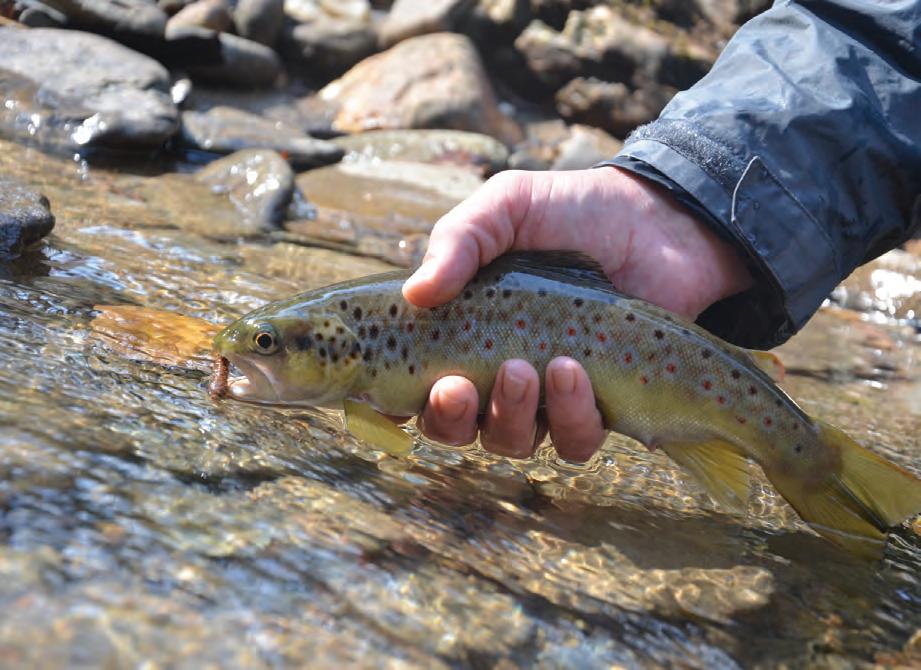
rocks I had secreted in his pack before the hike out. That’s what he got for bringing a day-pack to a three-night pack-in fishing trip. I had carried all the camping gear and food all weekend. I’m sure he would have brained me with one of those rocks if he hadn’t been so tired. This was the aftermath of a pretty spectacular fishing expedition. Three of us had spent three days exploring and fishing the Jacks River in north Georgia’s Cohutta Wilderness Area. We had all caught fish, plenty of them. We

also witnessed something that would excite any fly angler. After a late supper, three of us were kicked back around a campfire that was slowly dying from lack of attention in the damp river bottom. Full bellies and a full day on the river lead to lethargy. Conversation fizzled. The rush of the river and the drone of familiar night sounds lulled everyone into a comfortable sleepiness. Eyes fixated on smoldering red embers amplified the darkness around.

It was from the darkness they came. With a shout, one buddy shot upright, slapping at the back of his neck. Headlamps clicked on. Smack! It stung when one slammed full-speed into my right cheek. Within minutes, the campsite was abuzz with huge black stoneflies. There were dozens of them, 2 inches and longer, with orange accents and long creepy legs. After the initial excitement and a determination that the bugs could not carry us away without an organized group effort, everyone went directly to their fly boxes.
The giant stoneflies were gone the next
looking for them. All three of us caught trout on big red and black stonefly nymphs with double beads until all the flies were lost or unraveled. It was the standard Jacks River mixed bag of rainbow and brown trout from 5 inches up to 12 inches. We have caught a few fish significantly larger than that from
the Jacks, but none of the huge browns the river is rumored to contain.
It is well over 15 river miles between vehicle access points to the Jacks River on Cohutta WMA. It’s about as deep into the wilderness as one can get in the Southeast.




Used by Bass Master Elite fisherman Brock Mosley and two time back to back Bass Master Classic Champion Hank Cherry, Dakota Lithium is the choice of champions and trusted by professional tournament anglers for those long days on the water.

The Dakota Lithium 36V 63Ah battery will allow you to fish longer with twice the power, half the weight, and four times the lifespan than your old sealed lead acid or AGM batteries –providing exceptional lifetime value. All backed by the Dakota lithium legendary 11 year warranty.
Join the Lithium Revolution now! Use the code coastalangler for 10% off on your next purchase at dakotalithium.com

Professional bass angler Takumi Ito came to the United States from Japan in 2019 with a dream of competing on the sport’s biggest stage. It didn’t take him long to become a top contender among the big dogs in the Bassmaster Elite Series.
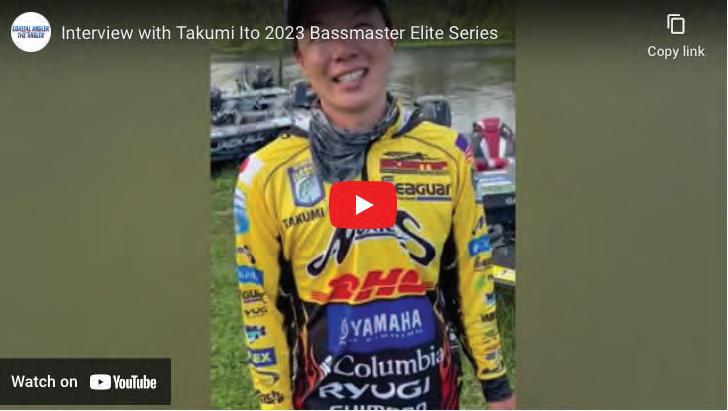

Ito is not a newcomer to the sport. He has nearly a decade of professional bass fishing under his belt. He was, however, new to the U.S. tournament scene back in Feb. 2019 when he took second at a Basspro.com Open event at Toledo Bend in Louisiana. It was just his second Open tournament, and he followed it up with three top-10 finishes in 2019 Opens.
With just a year touring in the U.S., Ito climbed into the big leagues as an Elite Series pro. He has since made a name for himself on the tour with 11 top-10 finishes, including his first Elite Series win in July 2021 on the St. Lawrence River.
The Angler Magazine caught up with Takumi Ito during February’s Elite Series season opener at Lake Okeechobee. It was his first time fishing the sprawling Florida
reservoir, and he was all smiles thanks to a new sponsorship from DHL Express.
“I am honored to receive the support from a global company like DHL. It has been my dream since childhood to participate in this competition in the United States, the home of the professional bass fishing sport,” said Takumi in an announcement of the sponsorship. “I will do my best this 2023
season, aiming to win one Bassmaster Elite Series event and the Bassmaster Classic as well as increase my annual ranking from last year.”
After a late February Elite Series stop at Lake Seminole, Ito will compete in his third Bassmaster Classic—“The Super Bowl of Bass Fishing”—March 24-26 on the Tennessee River in Knoxville. See what Ito had to say in this video interview with The Angler Magazine:
ou don’t need an invitation to have fun in Upcountry South Carolina: Come kayak crys-tal blue lakes, hike to rushing waterfalls, dig into local cuisine, attend family oriented events and breathe fresh mountain air. But when you hold a South Carolina fishing license, it feels like an official ticket to enjoy the great outdoors.
Fish bite year-round in the lakes, rivers and streams of Upcountry South Carolina, which is located in the state’s northwest corner in the foothills of the Blue Ridge Mountains. Devils Fork State Park in Salem is a great place to access Lake Jocassee, which holds state records for rainbow trout, brown trout, redeye bass, smallmouth bass, spotted bass and yellow perch. Or try your luck at Lake Hartwell, at Lake Hartwell State Park in Fair Play and Sadlers Creek State Park in Anderson, three-time host of the Bassmaster Classic.
The Chattooga River boasts healthy wild trout populations and is also regularly stocked by Oconee County’s Walhalla State Fish Hatchery. The Whitewater River above Lower White-water Falls is another great option for wild trout. Lake Keowee, at Keowee-Toxaway State Park in Pickens County, swims with largemouth, smallmouth and spotted bass, crappie, bluegill, yel-low perch, catfish, brown and rainbow trout.
Pick up everything you need—including advice— at local fly shops or book a guided fish-ing trip. Sam Jones, of Jocassee Charters, puts anglers on trophy trout. Buster Green’s Guide Ser-vice reels in stripers, hybrids and bass on Hartwell and Keowee. Chattooga
River Fly Shop leads fly fishing trips on the Chattooga and Chauga rivers.


Even if you don’t fish, you can still get on the water. Jocassee Lake Tours offers tours of the lake and of Jocassee Gorges, which National Geographic called a “destination of a Lifetime.” Some amazing spots can only be reached by boat. Several tours are offered, so you can learn from a naturalist while riding on a pontoon or paddle a kayak through coves and under waterfalls.
Prefer to captain your own boat? There are several rental companies, including TriCounty Boat Rental, on Keowee, Jocassee, Hartwell and other lakes.

If you’d rather be under the water, Jocassee is a world-renowned freshwater diving desti-nation that boasts visibility of more than 50 feet at depth. Lake Jocassee Dive Shop offers lessons and guided trips to see “The Wall,” where a section of mountain was blasted to build the dam, or a 40-foot swimthrough wooden sailboat.
From fishing to boating, hiking to camping, biking to bird watching and more, the Up-country’s state parks are a great place to play. Dip into the swimming hole at Oconee State Park. Hike to the tops of Pinnacle and Table Rock mountains at Table Rock State Park. Explore the 13,000-acre Mountain Bridge Wilderness Area at Caesars Head State Park. Or create your own adventure at any of the Upcountry’s 13 state parks.












wenty years ago, I wrote an article on the Golden Age of Panama fishing. Long have anglers waited for access to the salt and freshwater environments of Colombia.


In 2016, a lengthy peace process was negotiated and a final agreement for a ceasefire and cessation of hostilities between the government and militias. In truth, there are still areas of the country to be avoided and cocaine production remains high, but the political and drug-crime environment has improved enough to move Colombia nearer the top of the target list for angling. The country’s upward trajectory with new tourism outstrips its neighbors. The latest three trips we’ve taken to the country have been completely safe.

 By Riley Love
By Riley Love
 Fishing the Amazon and Orinoco River basins are “peacock bass trips.” It is a stunning fishery, where
Fishing the Amazon and Orinoco River basins are “peacock bass trips.” It is a stunning fishery, where



you routinely encounter fellow anglers from the far side of the world. From there, these trips can be divided into peacocks and “what else.” In Guyana it was giant arapaima. For the last Brazil trip, it was big wolf fish. This venture was to the Guaviare River, massive itself, a tributary to the mighty Orinoco. It is hard to understand the size of these watersheds until you see them yourself. Our quarry here was payara, the vampire fish.

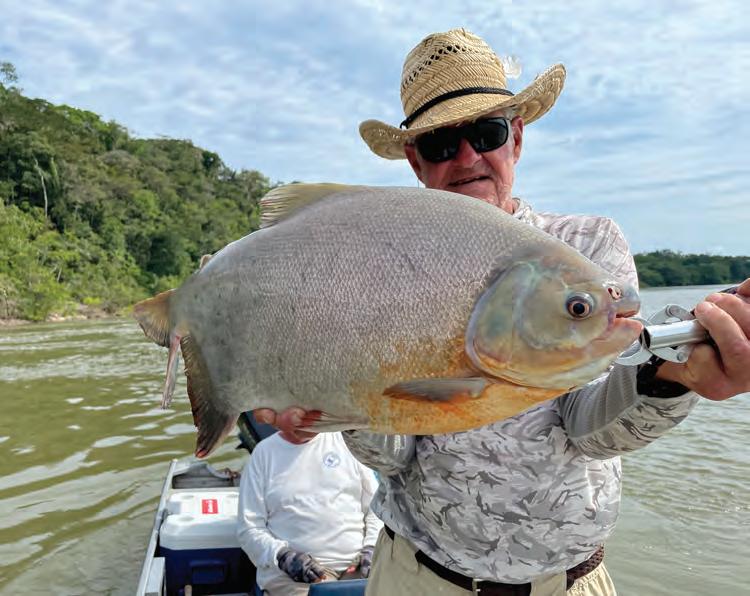
The dichotomy of life in the tropics is the wet and dry seasons. During the time of rain, the rivers swell from their banks into dense rainforest. Sitting in your boat, you listen to peacock bass bust
The fishing season is refined to those months when the rivers shrink back into their skeletal forms and fish are targeted in remaining aneurysmal pools. But the payara have a need for speed. They stack up in current and mouths of tributaries where more water flows. There is something about going after speed freaks… it presses my buttons.
Alberto “Beto” Mejia is the young progenitor of FISH COLUMBIA. He has developed lodges here, on the Orinoco and on the Pacific coast at Punta Ardita, just inside the Panamanian border. He is a stone-cold payara fly fisherman. This lodge is more rustic, and you really feel away from it all.
Peacocks and payara take flies very well, both poppers and streamers. For the conventional fisherman, it’s a chance to use multiple baits and techniques. Very large topwater prop baits and poppers, big minnows at multiple depths. The Dramatis personae includes numerous otherspacu, sardinata, also the
opportunity for multiple species of catfish, some in the 400-pound range.
Uraima falls in Venezuela was a specialized lodge for payara. This is off the list as a destination for various sordid reasons. I have bagged them across the frontiers of South America. Most run 6 to 7 pounds, and a very good one about 15 pounds. The fish on Columbia’s Orinoco run twice that size. I believe this is the best payara lodge on the planet.
For more information, visit fishcolombia.com. For more from Riley Love, go to rileylove.com and find him on social media @ rileyloveauthor.

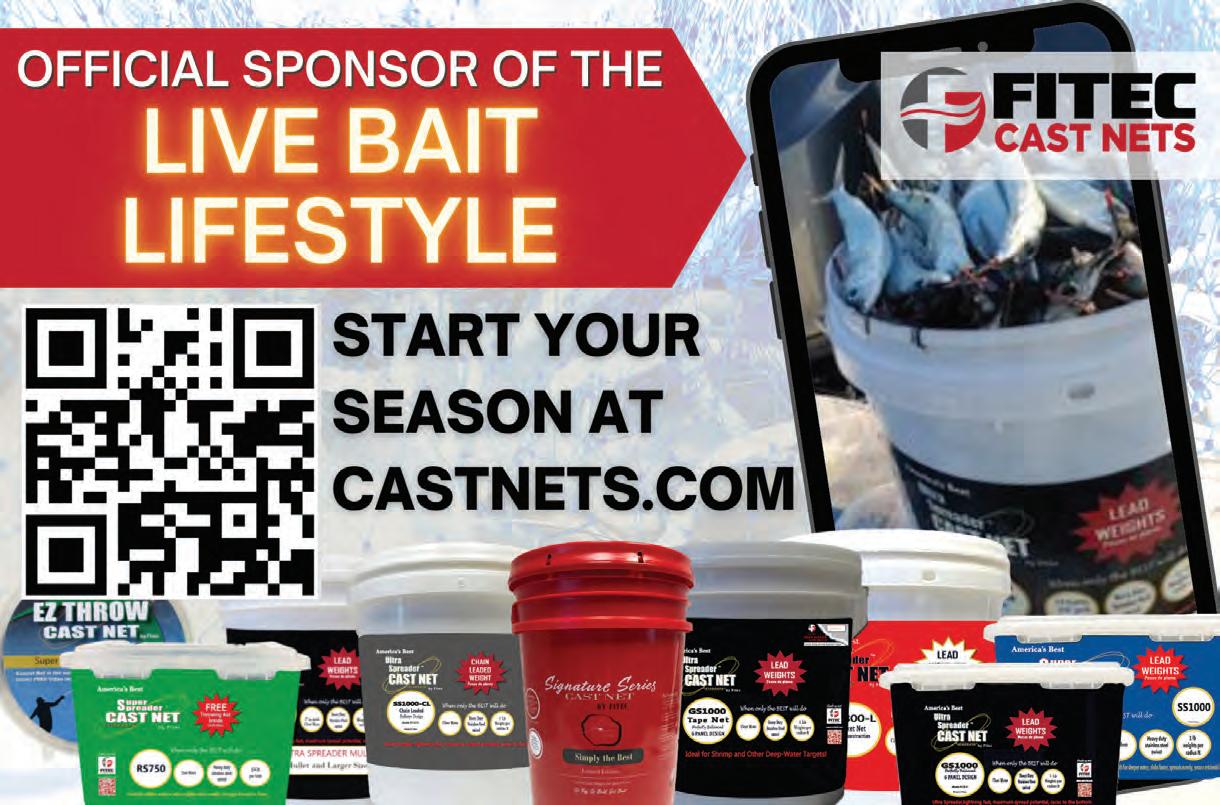

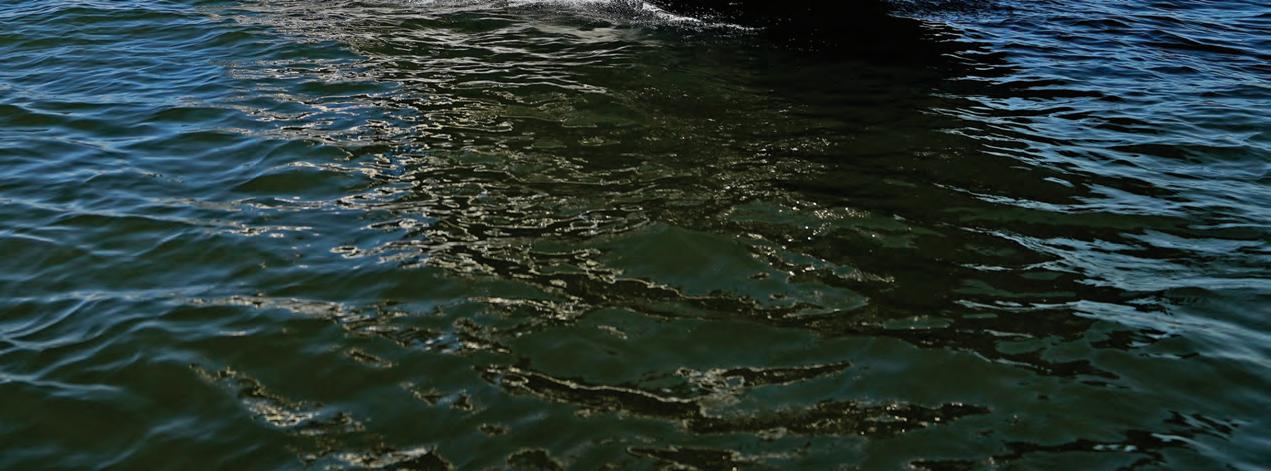




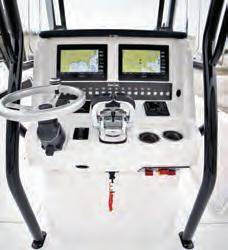

Famous for its incredible strength, the Palomar knot ties well in all line types. That’s a huge advantage, and few knots can equal it on that front.
Tied properly, this knot won’t slip even on braid, making it a popular choice as an all-around knot for securing line to swivels, hooks and pretty much anything else where a snug connection is desired.

It’s also quite easy and fast to tie, though it can be a tricky choice for lures because it requires a large loop to be passed completely over and around your terminal tackle.


For more tips and tricks, check out https://usangler.com






The boat was still 50 yards from our next spot, but it was easy to see the marker buoy we were approaching was going to produce. It was a great feeling given the last half dozen had offered nothing. Our eyes were keen on the water surrounding the buoy, marking the channel at the mouth of a river with 30-foot water to its anchor.
Cobia were our fish of the day, and they were already in sight, their long bodies and flat heads easy to detect as they circled the surface around the man-made floating structure. It was mealtime, and we were ready to interrupt dinner.
These early spring cobia, with AKAs that include ling and lemonfish, can run anywhere from 10 to 40 pounds. We have to admit, cobia are just not real smart. In March and April these pelagics congregate more than usual and can be found in schools around channel markers and even cruising beaches as they

migrate north. They’re anxious to feast on the baitfish, as spawning is not far in their future. Spring cobia are vulnerable to our baits, creating an angler’s dream.
Not being overly skittish of our boat, the fish allowed us to move in to within 10 or 15 yards to start casting. Circling the buoy allowed for long casts to all sides. The fish were shallow for the most part, and even when we thought we had put them down the cobia could be found just 10 feet below. It was easy picking.
Our technique was simple and the tackle the same as we use for snook or big redfish. An Abu Garcia Revo Inshore baitcast reel spooled with 30-pound Stren Sonic braid with a 40-pound Berkley Trilene 100% Fluorocarbon leader. This is mounted on a Fenwick HMG 7-foot medium-heavy rod with a fast tip that’s ideal for both casting and fish management.
The cobia were suckers for a Berkley Gulp! 4-inch shrimp, either new penny or white, or a black Gulp! 10-inch eel. Rigged on a ½-ounce jig head, the baits were easy to cast, gave a solid

profile for the cobia to focus on and produced that wonderful Gulp! aroma and taste to seal the deal. Our casts were made beyond the buoy, and the baits simply retrieved like a swimbait close to the structure. Strikes were definitely not subtle.
If there are no buoys in the area, look for floating debris and a loitering ray. It’s the same principal of finding baitfish around surface structure, whether trash or alive. When fishing for cobia along the beaches, look for rays. The cobia are attracted to crabs and small fish displaced by the ray’s disturbance on the bottom as they search for food. This is a common situation, one we are always on the lookout for.
A habit we learned long ago is to check the drag on our reels often. Cobia are strong muscled and strong willed and a test for any tackle. Once hooked-up, we simply stay connected and let the fish tire in the open water.

This is an easy fly pattern to tie – much like the Copper John. The abdomen ribbing effect comes from using two colors of fine colored wire, one bright color and one a contrasting dark color. The thorax is dubbed. Goose biots provide the forked tail and two legs on each side of the thorax. A bead head is prescribed but may be omitted if some underbody of substitute lead is used for weighting under the thorax. The two wires provide some weight regardless.
Actual stonefly nymphs are typically, black, brown or rusty brown, and golden or tan in larger siz-es (4-12) as well as black, yellow, and green in smaller sizes (14-18). For example, a Black
Two Wired Stonefly Nymph may have an abdomen ribbed with hot orange wire and black wire; UTC medium. The tiny winter black stonefly nymphs would be imitated with UTC small wire of the same colors. A Brown Two
By Tom Adams and Alen BakerWired Stonefly Nymph may have an abdomen ribbed with silver wire and amber or rust wire; UTC medium. A Golden Two Wired Stonefly Nymph may have an abdo-men ribbed with hot yellow wire and copper wire; UTC medium. The little yellow and little green stonefly nymphs would be imitated with UTC small wire of the same colors as the larger golden stonefly.
The amount of weight determines how fast the nymph fly pattern will sink toward the bottom. The slowest rate may be achieved by omitting the bead and depending only on the two wires of the ab-domen. The fastest rate may be achieved with a tungsten bead. White goose biots may be used to make the nymph fly pattern stand out on a dark bottom but typically the goose biots color is natu-rally matched to the color of the nymph.
In North Carolina mountain streams, the golden stonefly
nymph is highly effective, thus the hot yellow and copper wire combination is a good choice.
Two Wired Stonefly Nymph
Hook: Nymph hook
Size: 6,8,10,12,14,16

Thread: 8/0 to match body
Tail: Goose Biots to match pattern
Abdomen: Two alternate colors of UTC wire to match pattern
Wings: Goose Biots to match pattern

Thorax Dub: Buggy to match pattern
Directions: Detailed tying steps may be found at the Rocky River Chapter of Trout Unlimited at www.rockyrivertu.org/dry-flypatterns.html.
If you are passionate about the outdoors and want to enjoy the freedom and benefits of owning your own business, come join our team of successful franchisees by publishing a Coastal Angler or The Angler Magazine in your area. Exclusive Territories Available Nationwide!




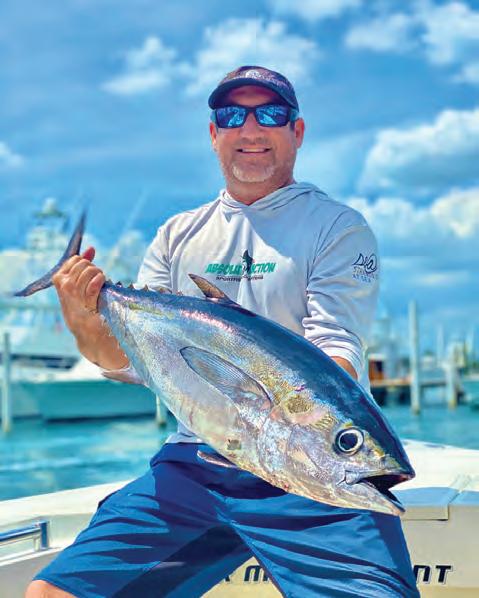



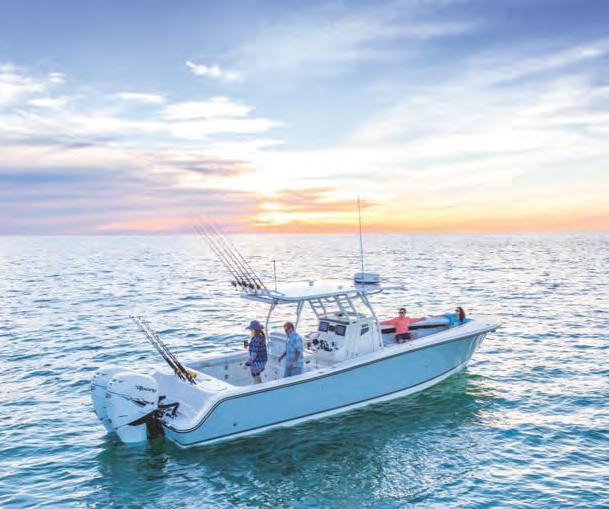


With a combined national readership of over a million per month and distribution to over 11,000 businesses in four regions, Coastal Angler Magazine and The Angler Magazine are the preferred resources for anglers and outdoor enthusiasts. Our brand is well known throughout the fishing world, and our free monthly magazines are recognized as well-designed, thoughtful publications that provide newsworthy and entertaining information pertinent to the marine and fishing industries.
Be in Business For Yourself...But Not By Yourself. An exceptionally rewarding and fulfilling business opportunity, as a co-publisher of your area’s Coastal Angler or The Angler Magazine, you’ll enjoy the benefits of controlling your own time and future. Our proven franchise publishing system enables individuals with no prior publishing experience to publish a credible and profitable localized version of our award winning magazine. We provide complete training and on-going support to ensure your success.



Just like pliers or a good knife, super glue is an essential item in your fishing kit. There are numerous practical uses for this stuff in fishing, and it’s also a catch-all tool. It’s like liquid duct tape. When you have it, there’s no end to the situations when it comes in handy.
Here are a few good reasons you should keep a tube of super glue in your console or tackle bag. You’ll find other uses as necessity dictates.
Soft Baits: You’re throwing away money if you fish soft plastics and don’t use super glue. Most soft plastics are designed for action rather than durability. They’re disposable, but that doesn’t mean you shouldn’t get the most you can out of them.
If you’re fishing a paddletail, grub, eel, worm or any soft plastic on a jighead, a small drop of super glue will extend the life of that bait indefinitely. Secured to the jig, it will never slide down to the bend of the hook like a loose sock. To a lesser extent, this trick works for
By CAM Staffbare hooks, as well. Forget multiple fish, a soft bait can last multiple trips when it’s glued in place—barring, of course, interactions with toothy fish.
When it comes to fish with teeth, there’s no way to avoid rips and tears in your soft plastics. Even toothless fish will beat up a bait with extended use. Super glue repairs slices and gouges in soft plastics. The rigidity of the repaired area will affect the action of the lure, but this can be a trip saver when you’re down to the last in a bag of that one color fish are biting.
Hard Baits: With hard baits, super glue is for on-the-water repairs. If the lip on your crankbait gets loose, a tiny dab of glue will hold it tight and keep your lure swimming true. If the screw eye comes out of your favorite topwater or swimbait, gluing it back will render it stronger than it was to begin with. Super glue

extends the life of expensive lures that would otherwise be headed for the trash.
Knots: The debate is ongoing on whether super gluing knots increases their strength. Most folks who do it are in the “it can’t hurt camp.” However, there are a couple situations when it just makes sense. Coating line-to-line connections that frequently run through the guides smooths the knot and protects it from wear. With braided line, good knots, and the right knots, are crucial. Even so, braided line can cut itself when knots shift and tighten under stress. A drop of super glue keeps knots snug and secure.
Miscellaneous: Super glue can save the day when an eyelet or rod tip comes loose. It’ll also keep you on the water when you cut yourself chunking bait. Glue the wound shut and keep fishing. Save the emergency room for later.
For more tips, go to coastalanglermag.com.
smaller chicken dolphins. If lures are your thing I prefer Yozuri Crystal Minnows and honestly color doesn’t matter. Pitch around the weed lines or patches and look deeper down for the bigger Mahi. As for Tuna with all the chumming going on, I like to send down a vertical jig on 60#-80# test at least 100’ below the boat. Working your jig through the water column is a good way to fire up any kind of fish that may be lurking around in the shadows. If you have a large diamond jig I’d put some heavy wire in front of it for a chance at a wahoo. Triple Tail are amazing fish on light tackle and I recommend 15#-20# fluorocarbon and #2 Owner hook. Live
If bottom fishing is your go to joy Vermillion snappers, Groupers, and Rock salmon is my target. For Vermillion snappers I like using a 2-3 hook chicken rig mixed with cut squid and Boston mackerel. Let your weight sit right on the bottom and wait for those 2-3 light bites. Rock salmon and Groupers like to hide out in the rocks and caves, so a slip lead is what I like to use. Heavier leader line for Groupers and larger baits close to the bottom. Feel the bite and start cranking. The first 20’-30’ are the most

When it comes to offshore fishing don’t give up. There’s a lot of trial and error. Figure out what works best for you and as always keep your lines out and keep them tight.


